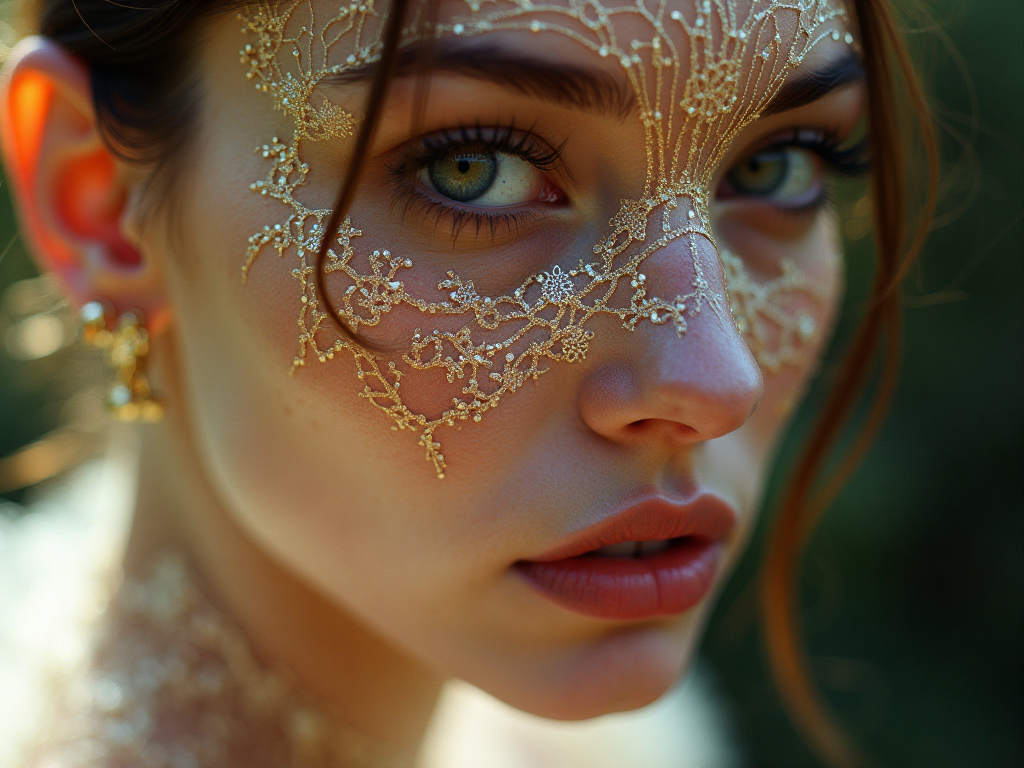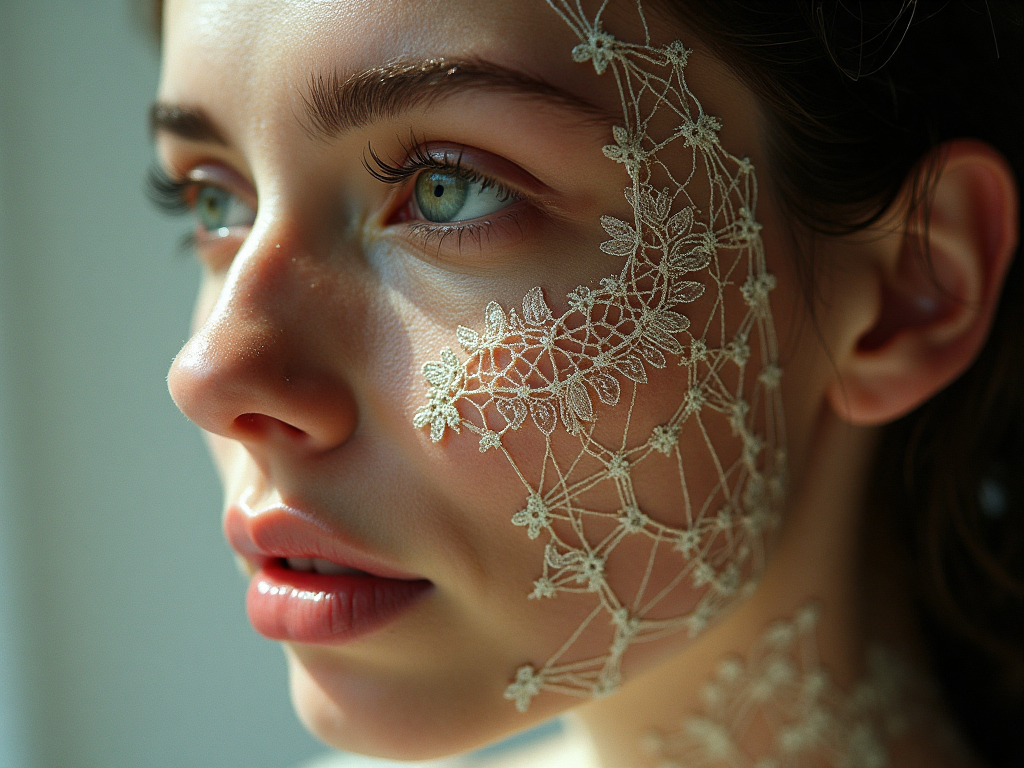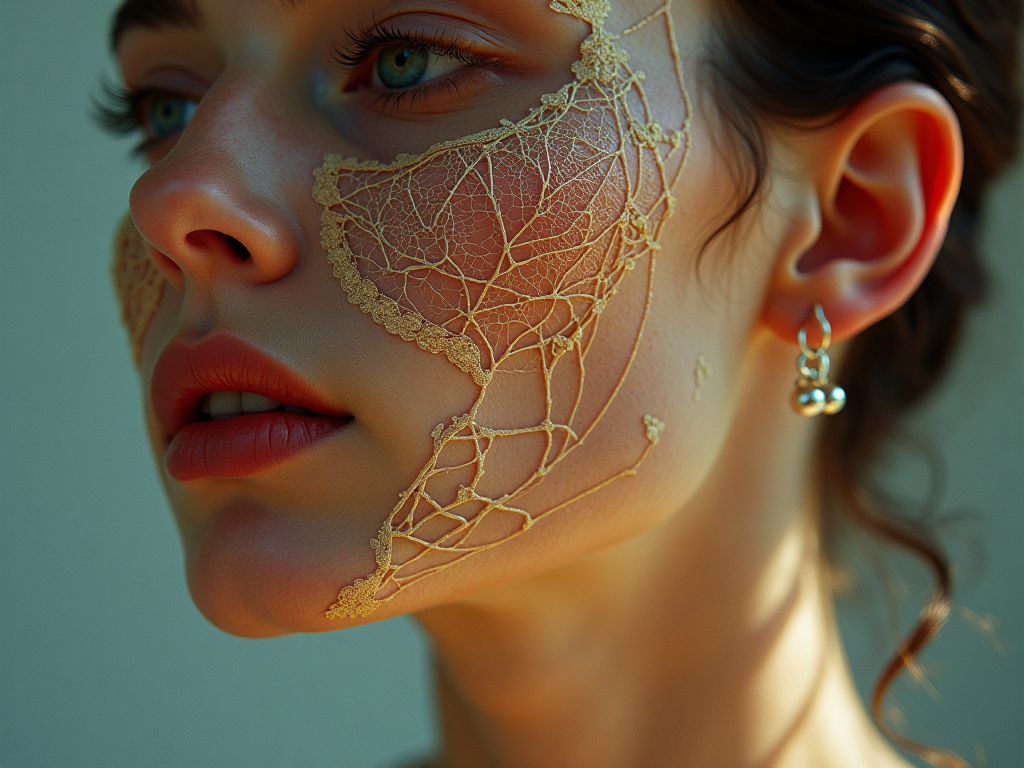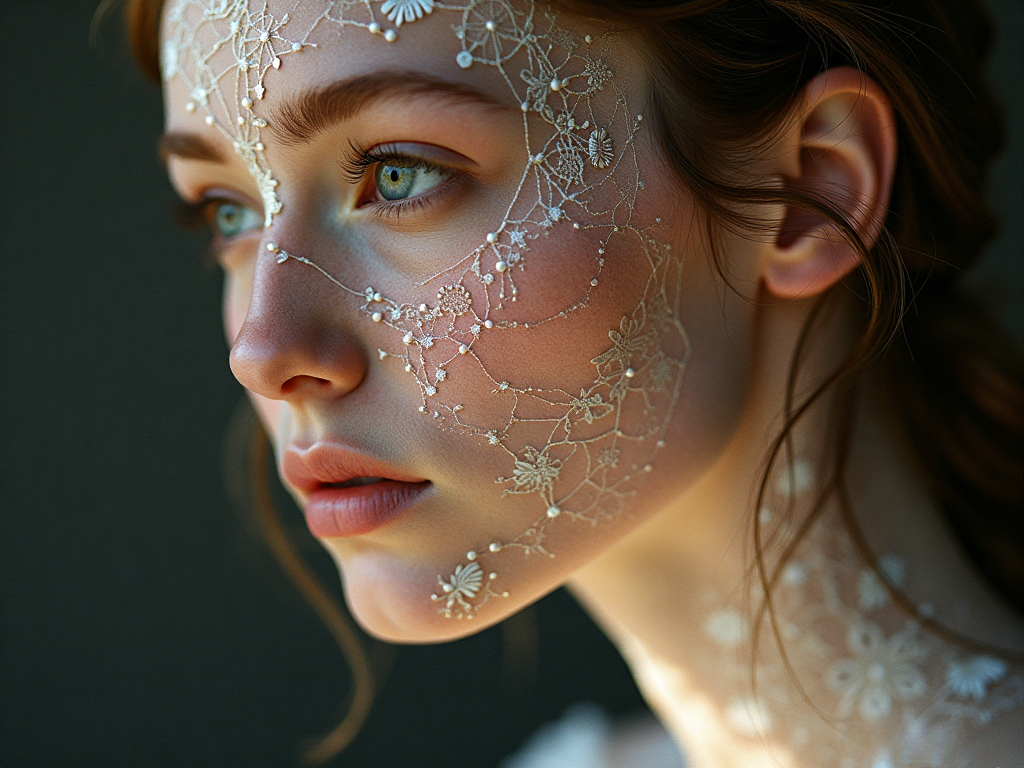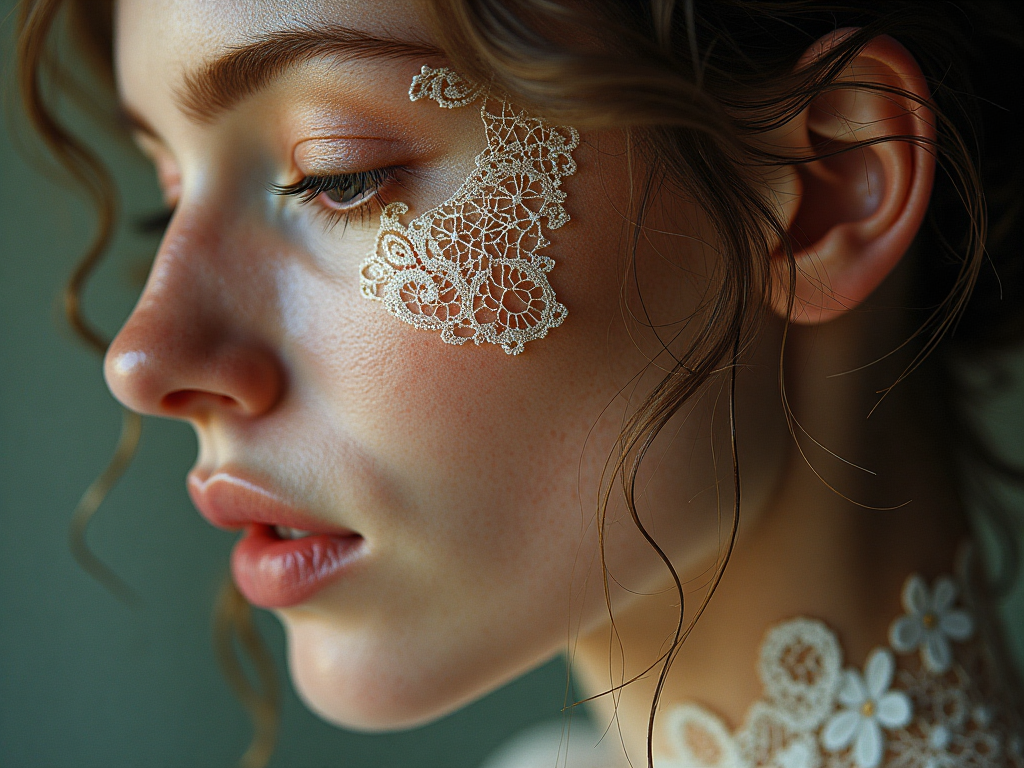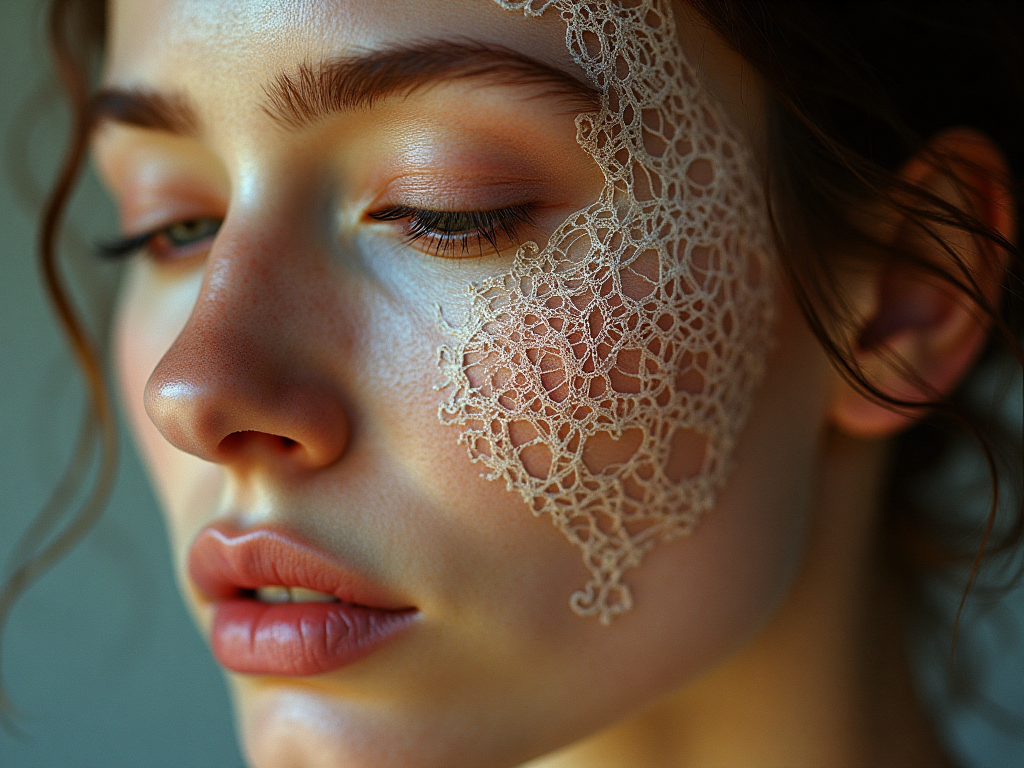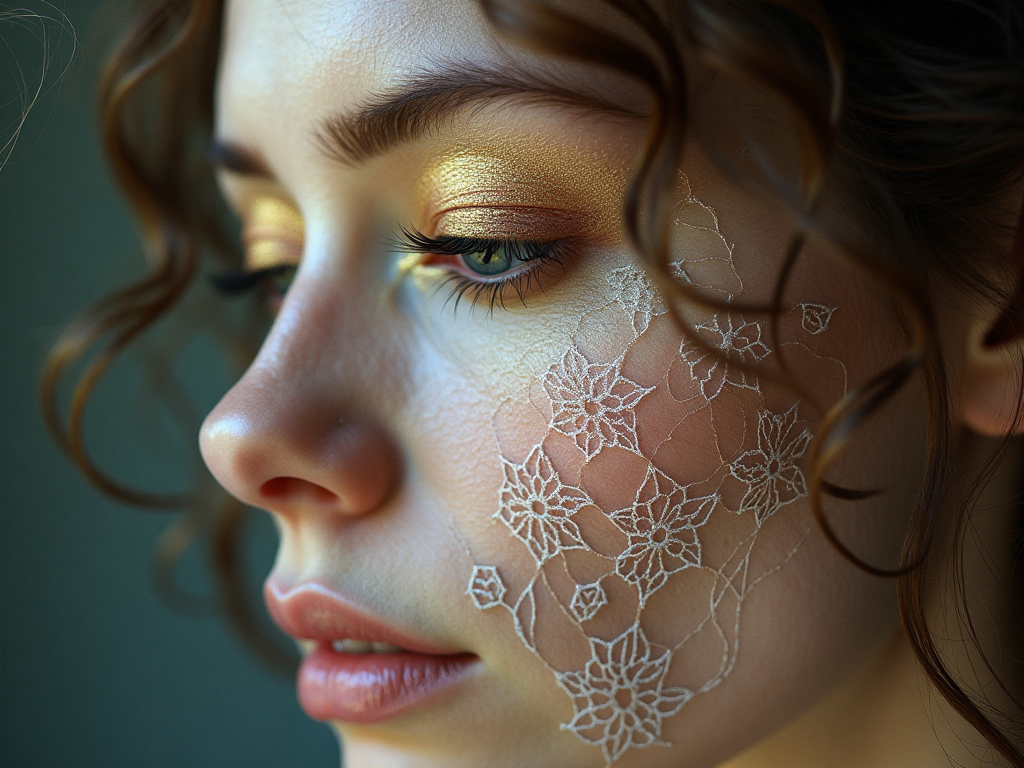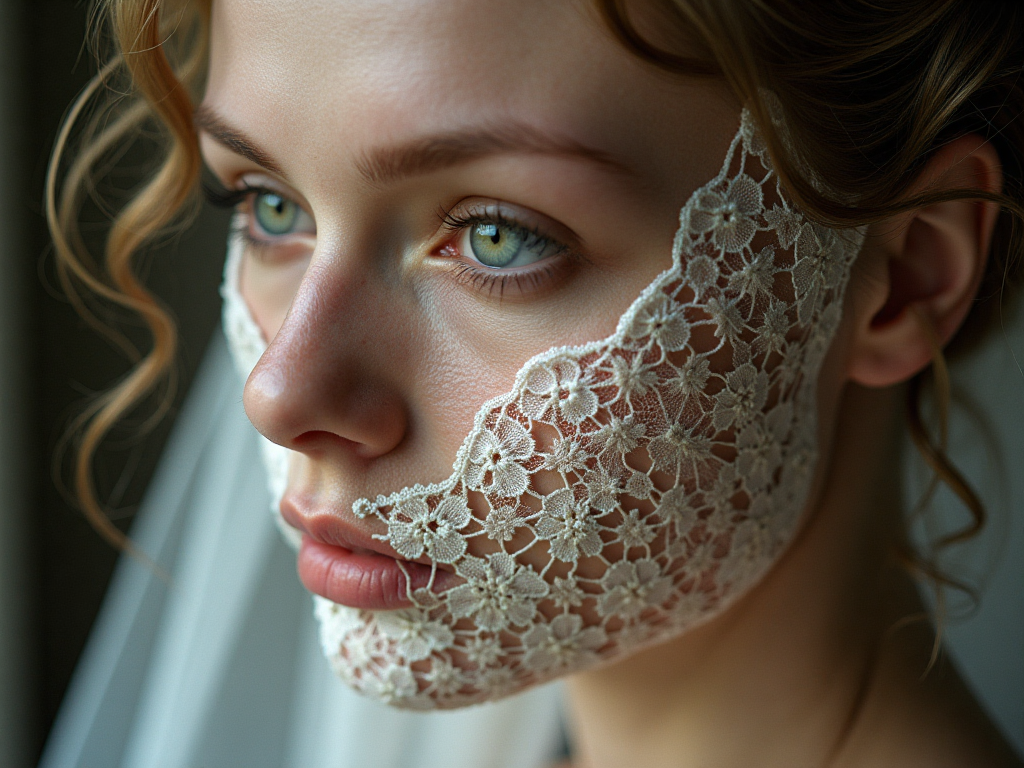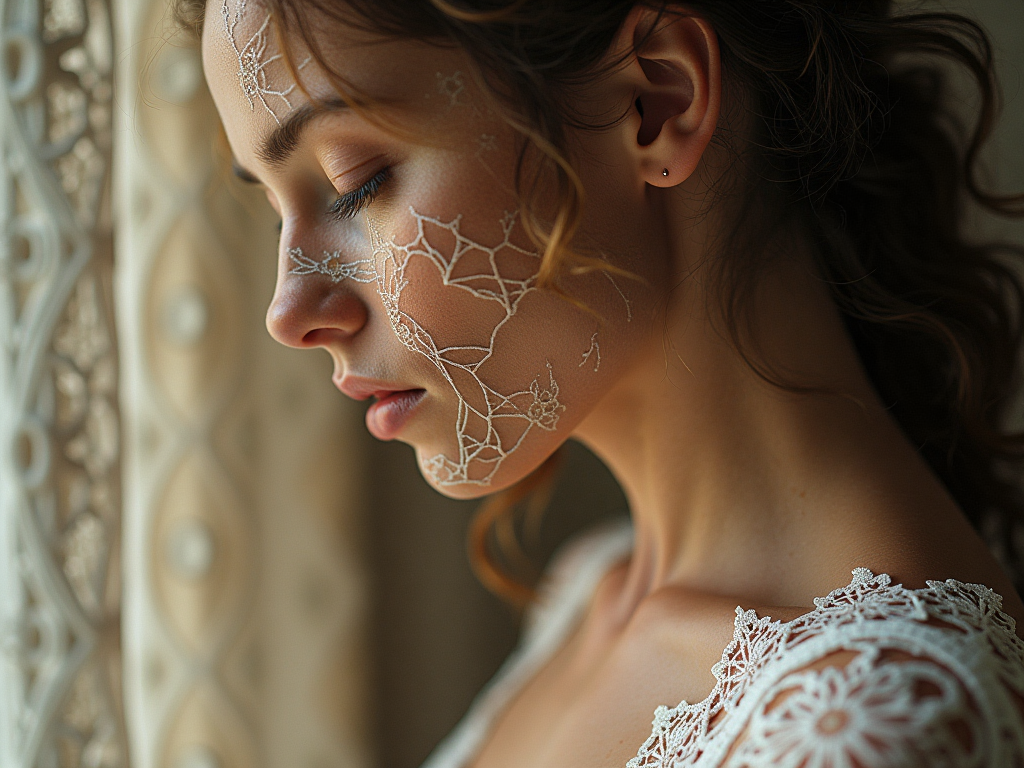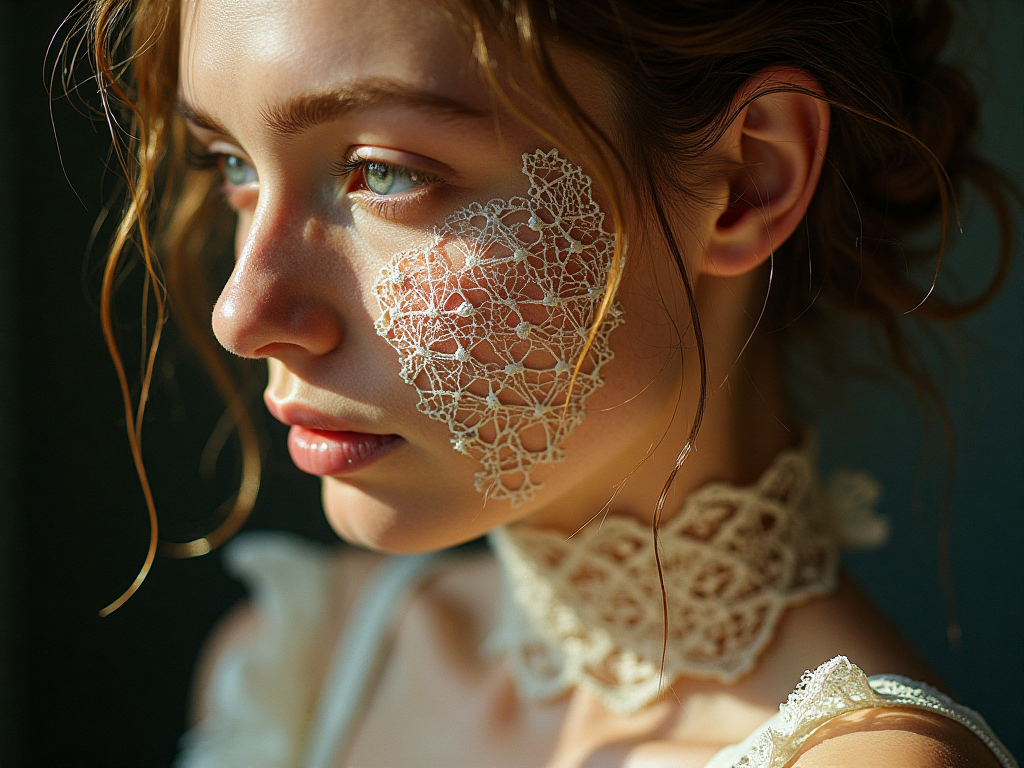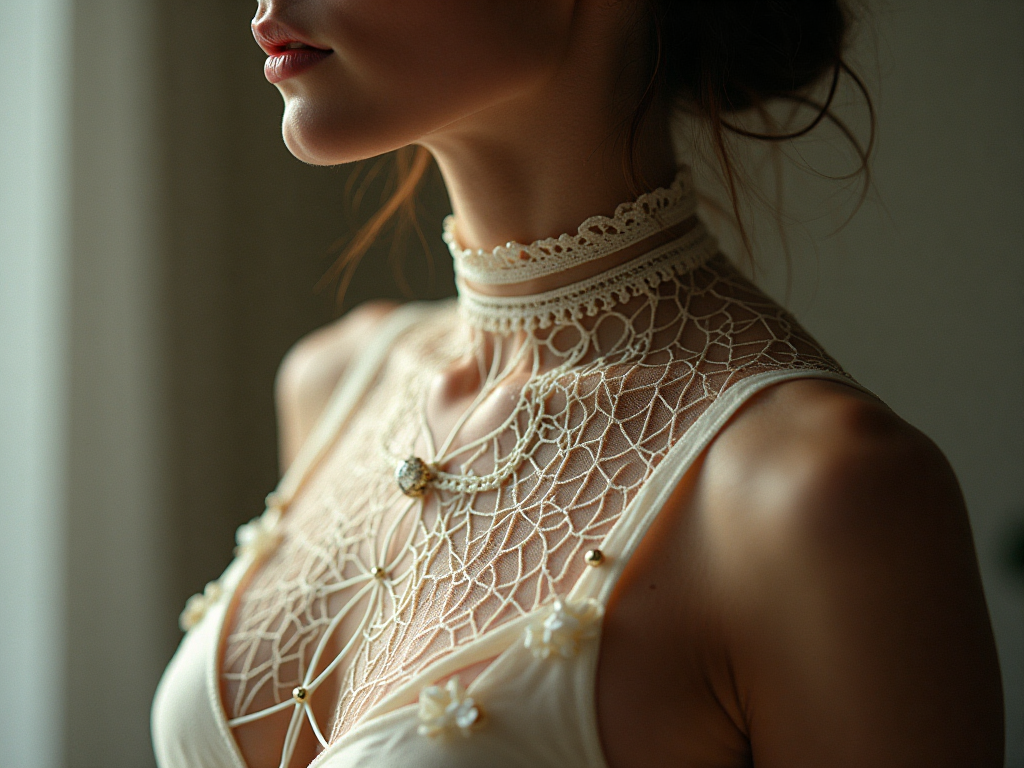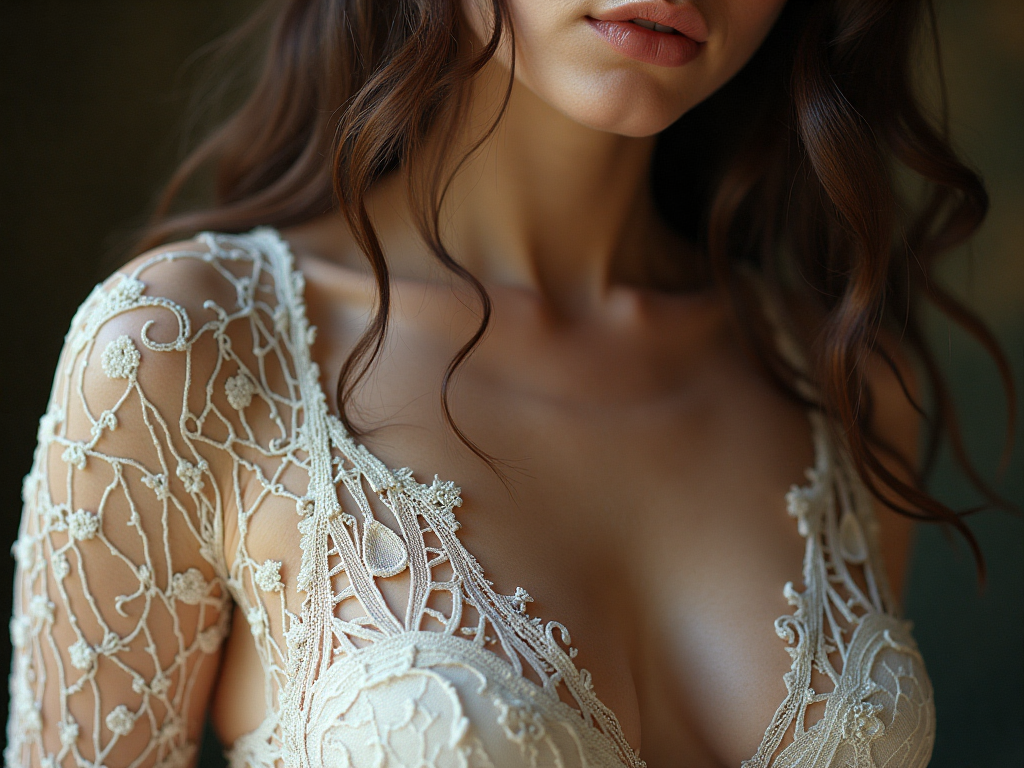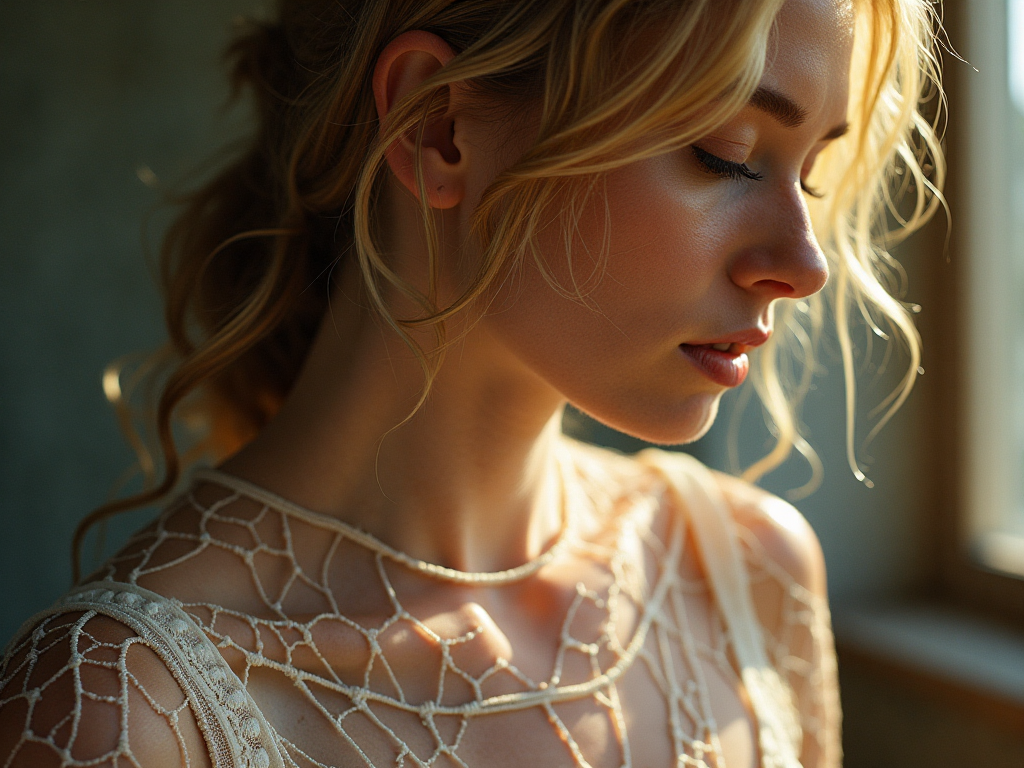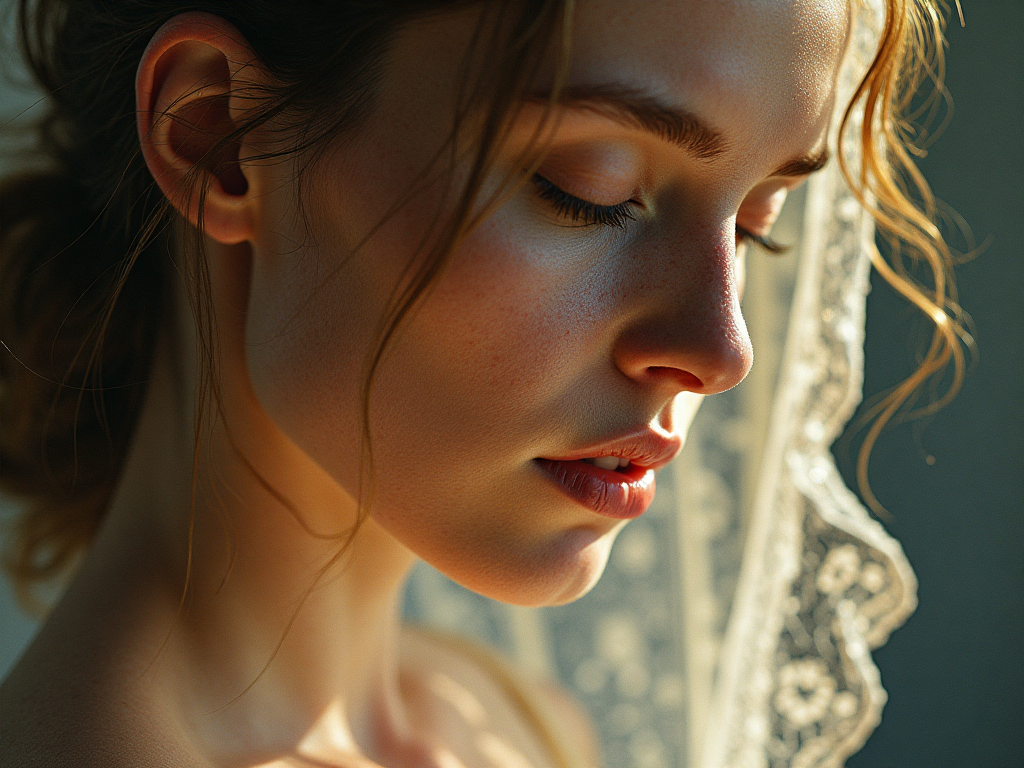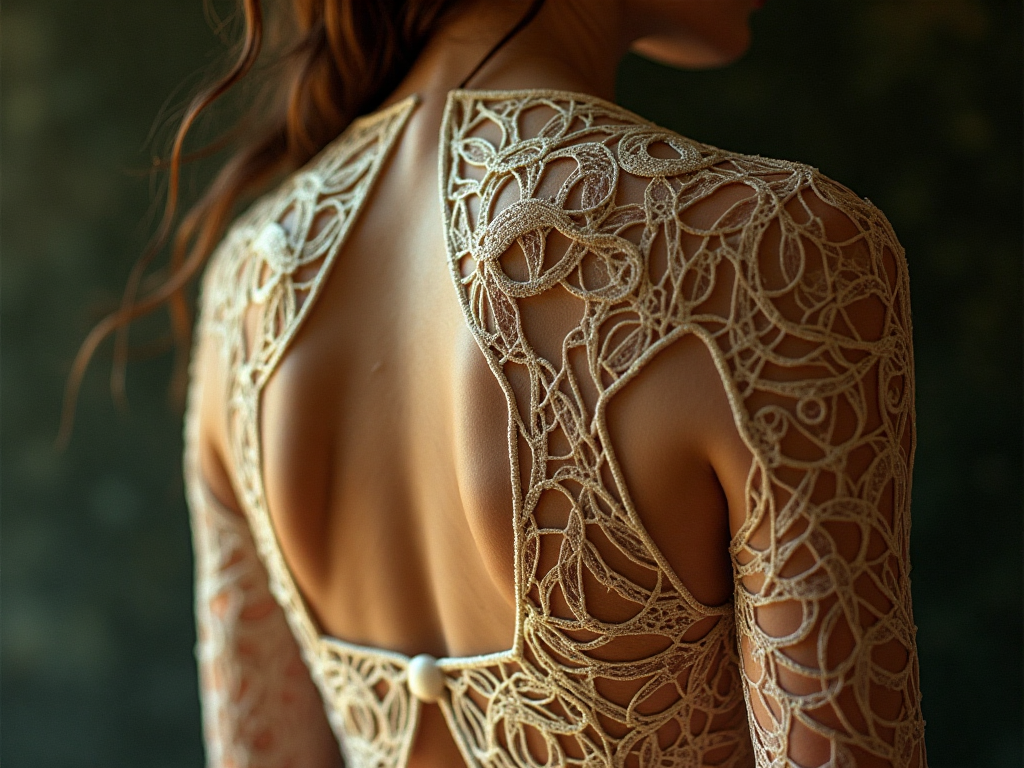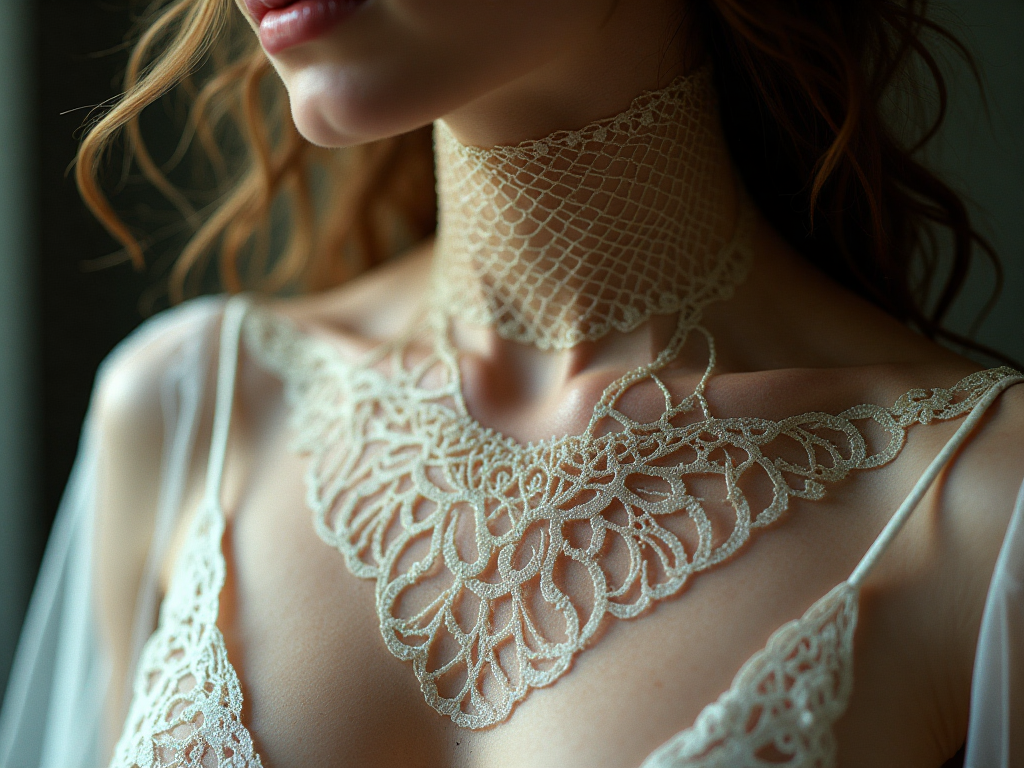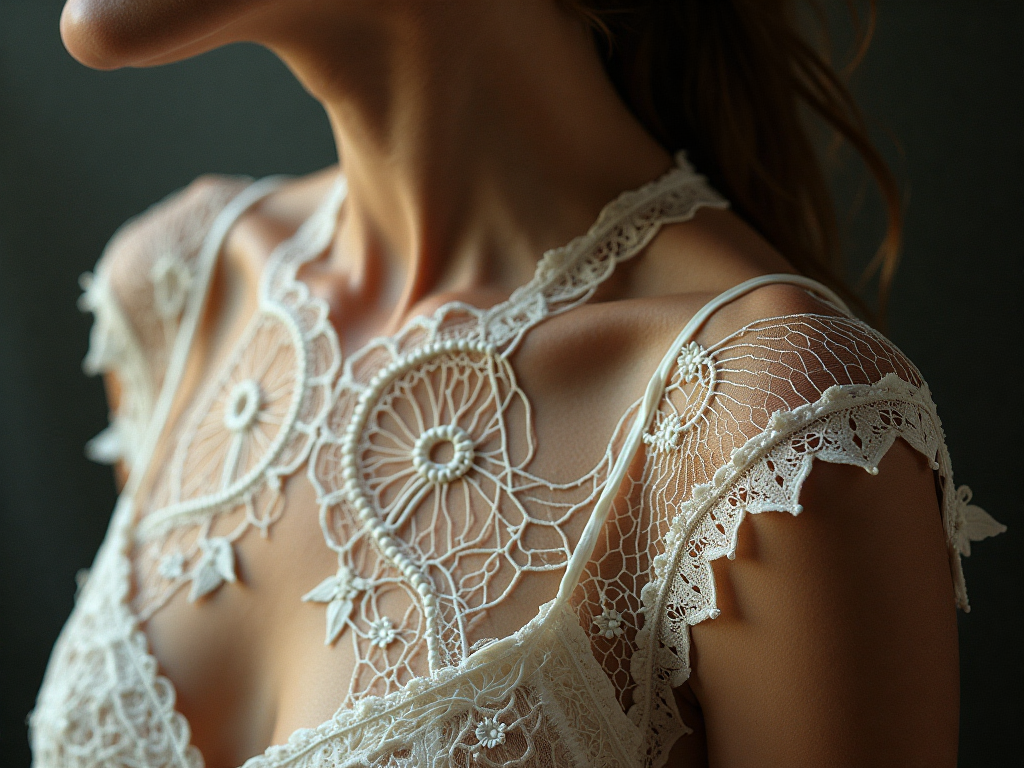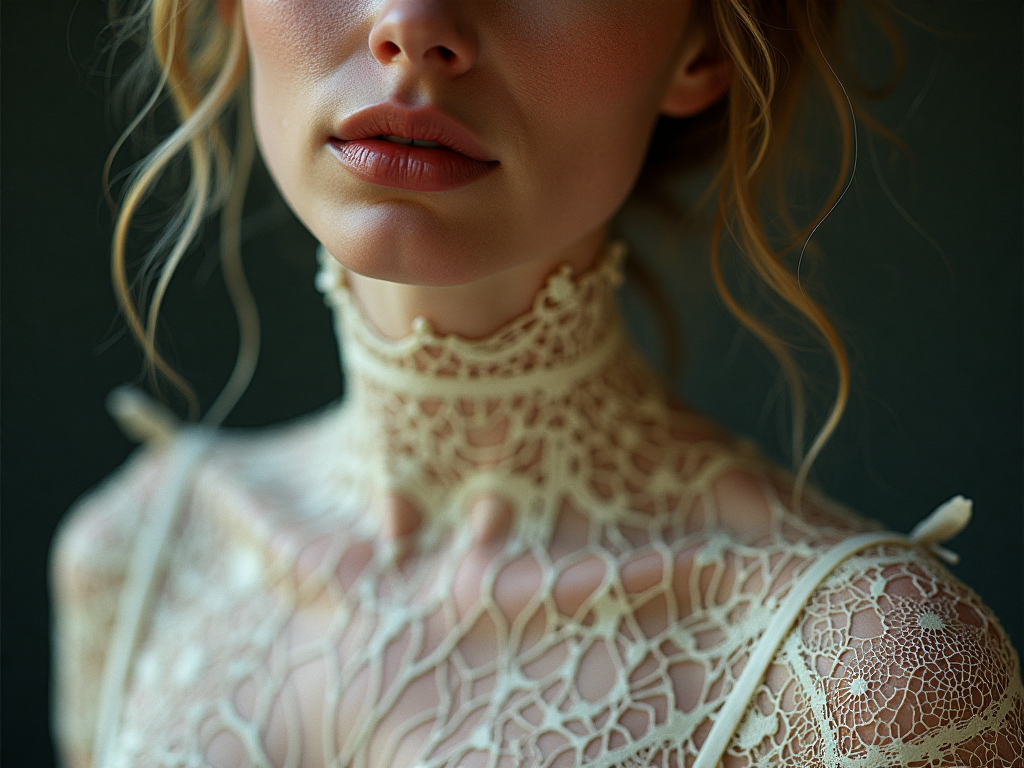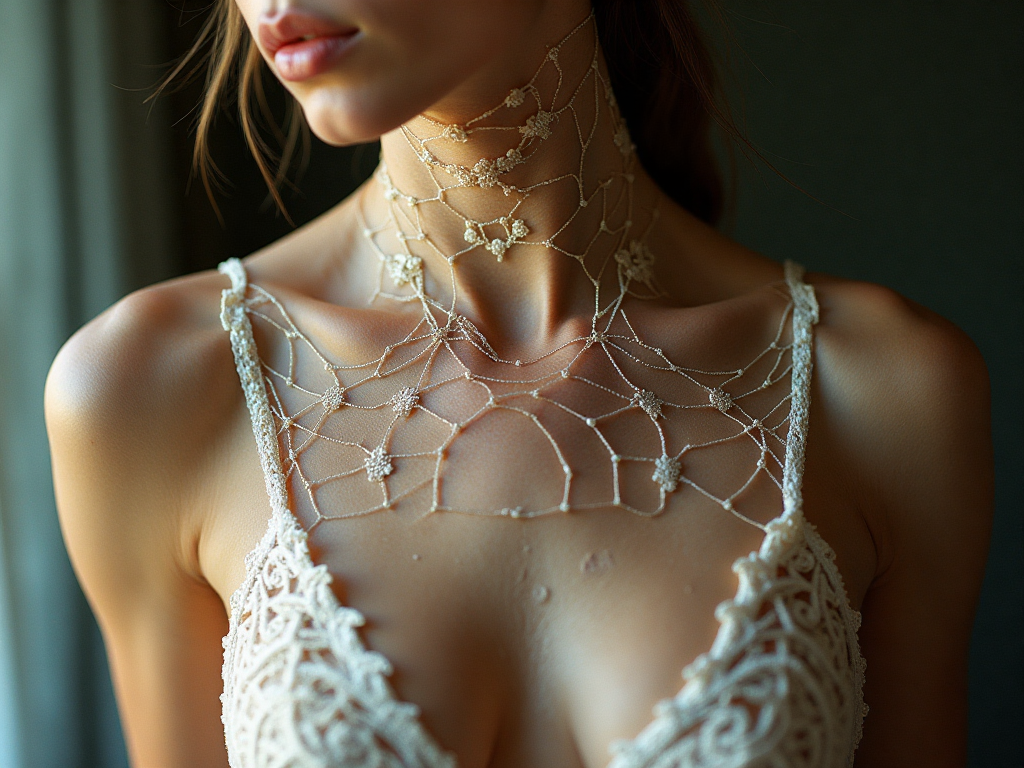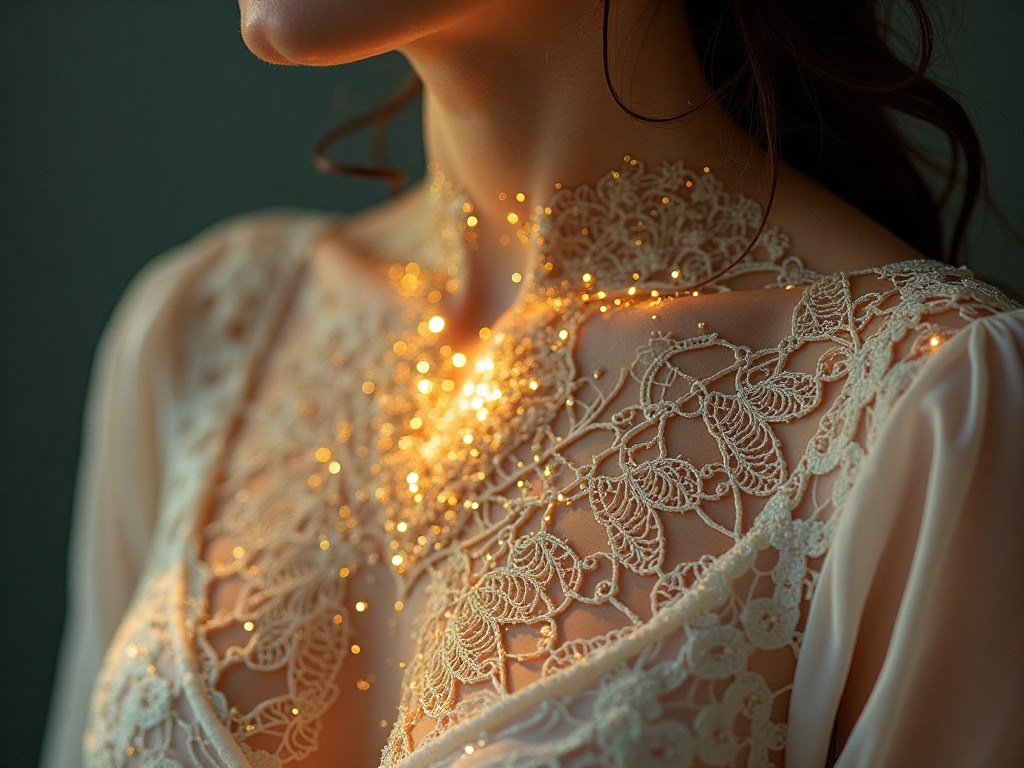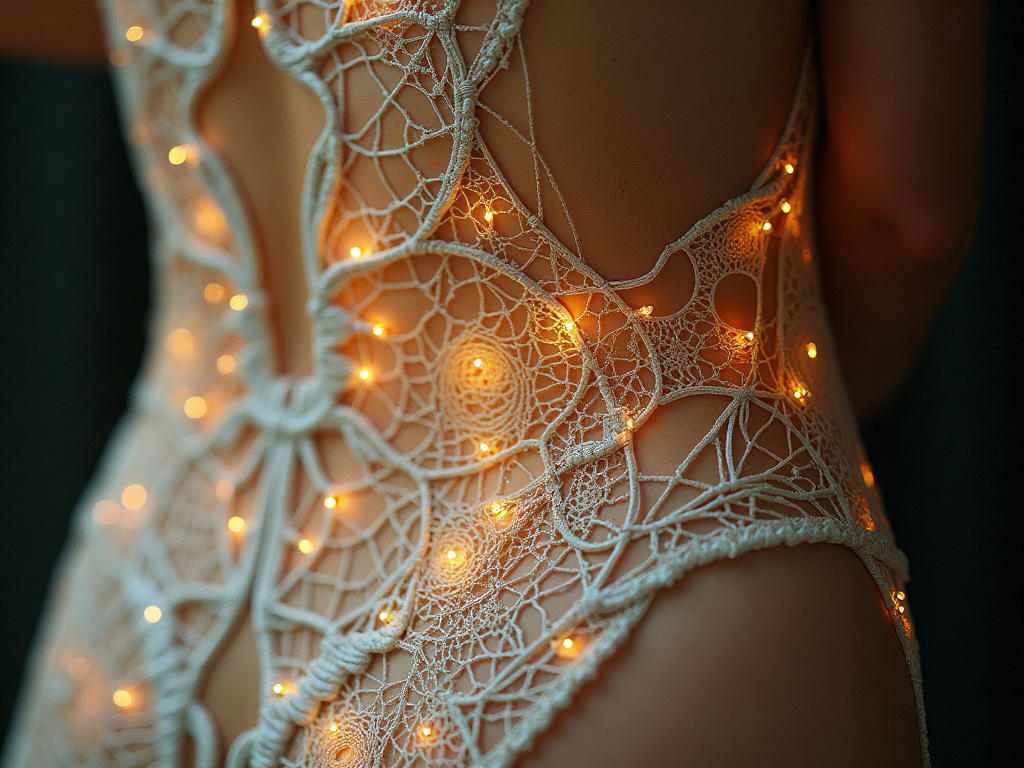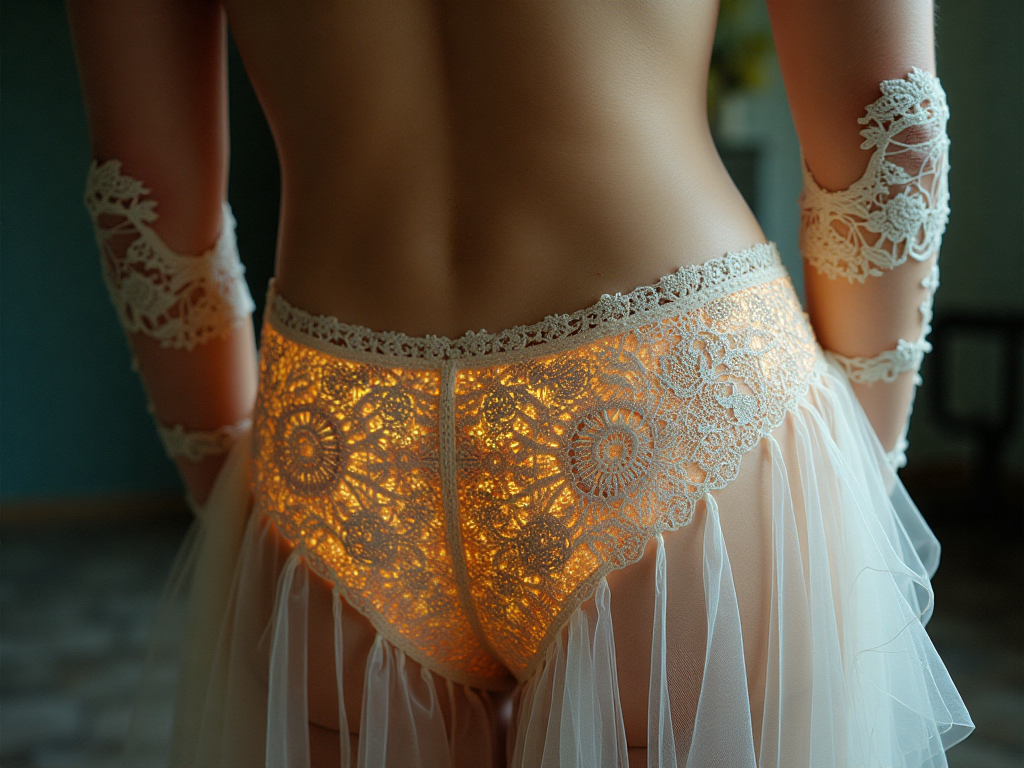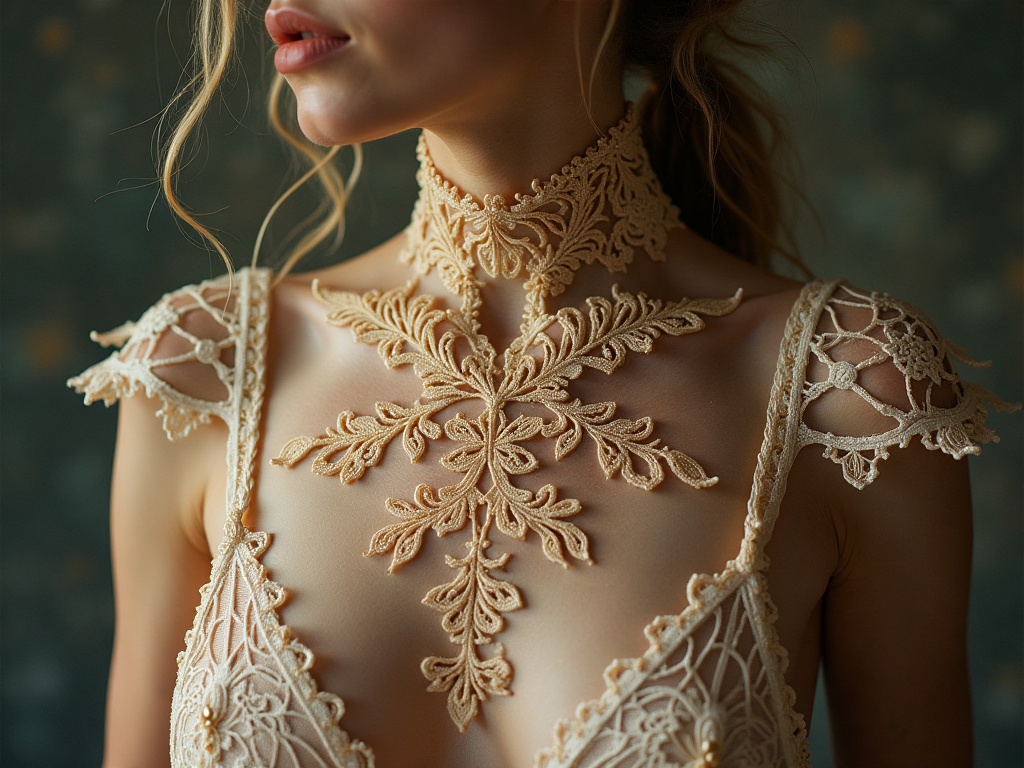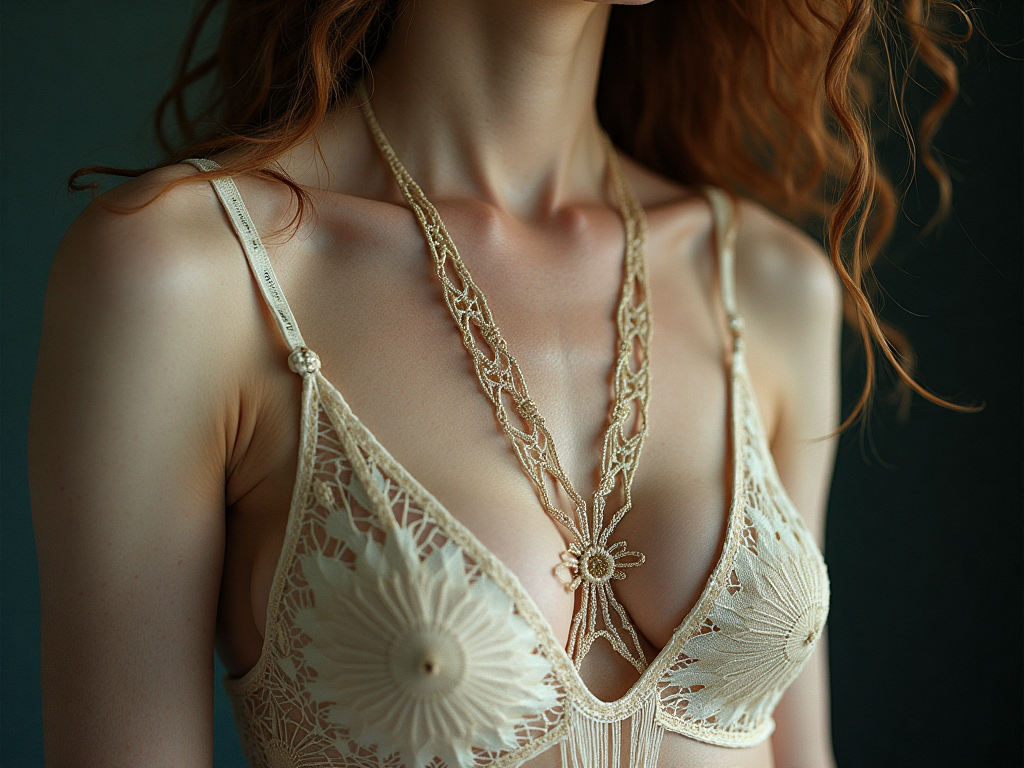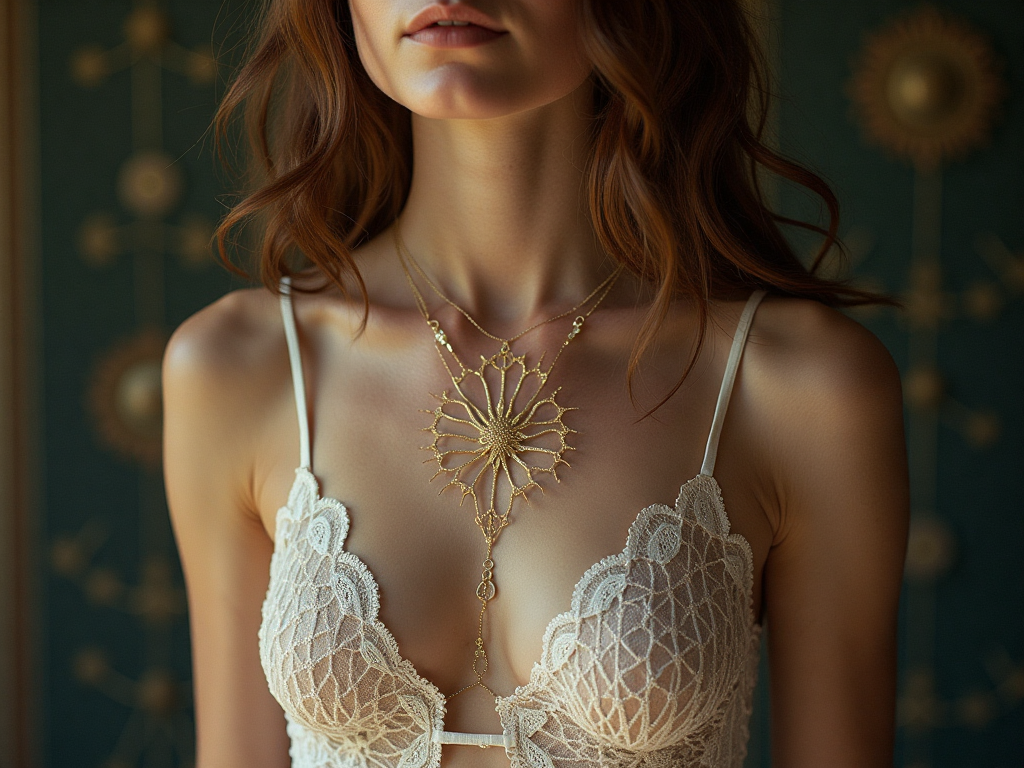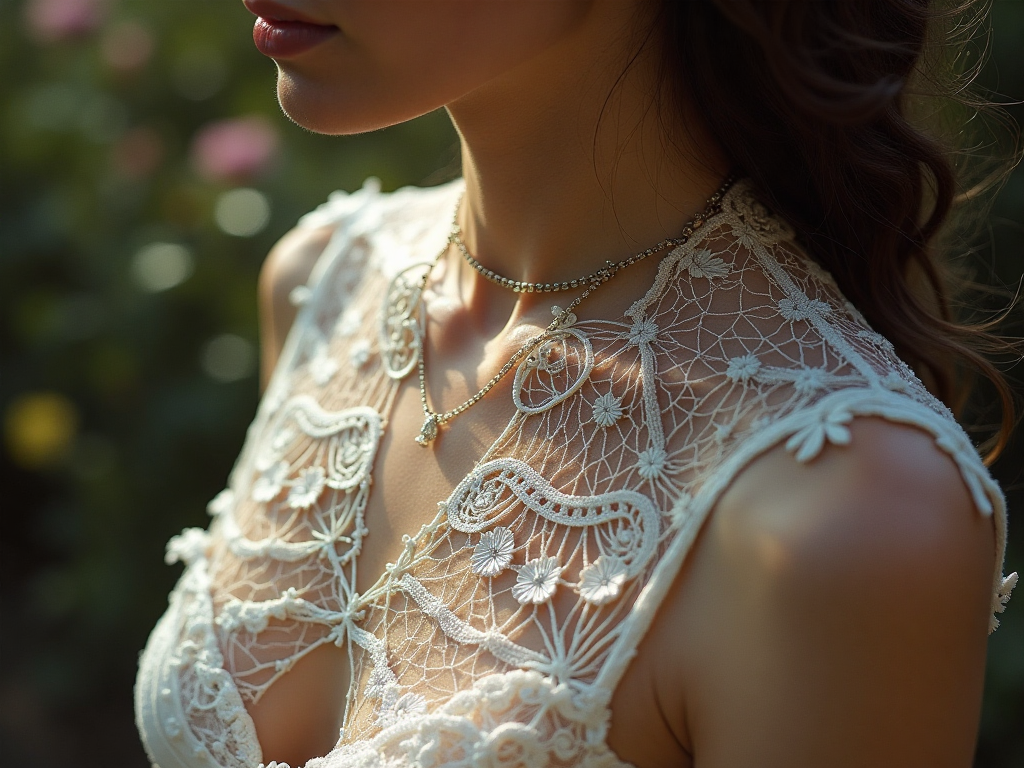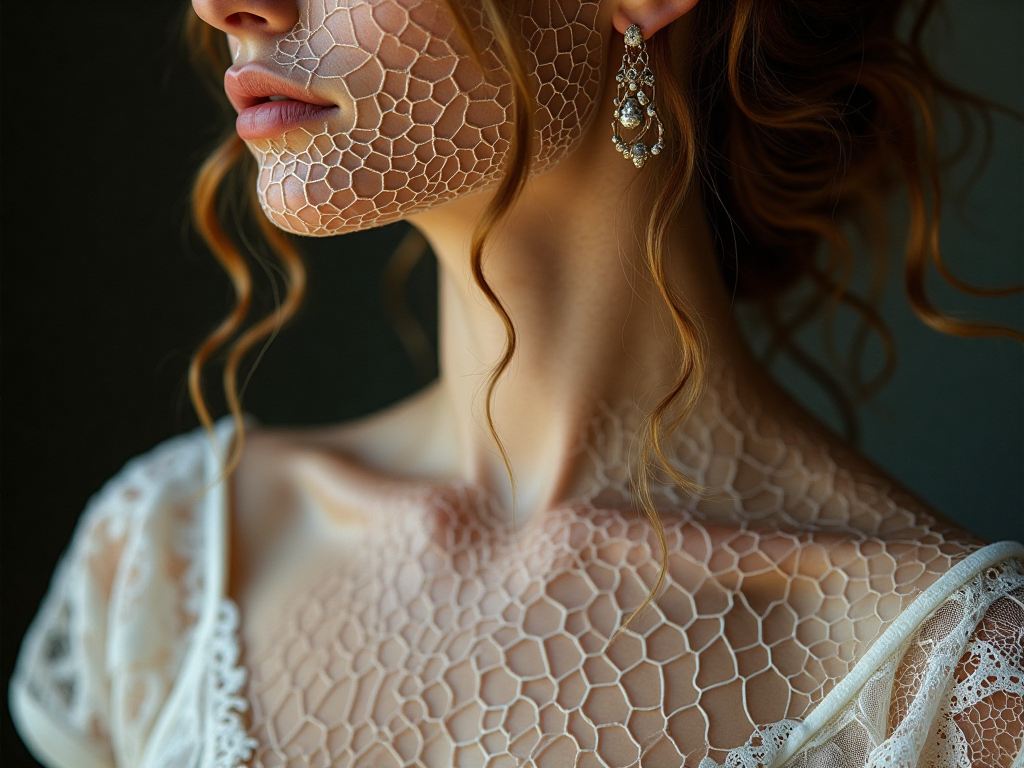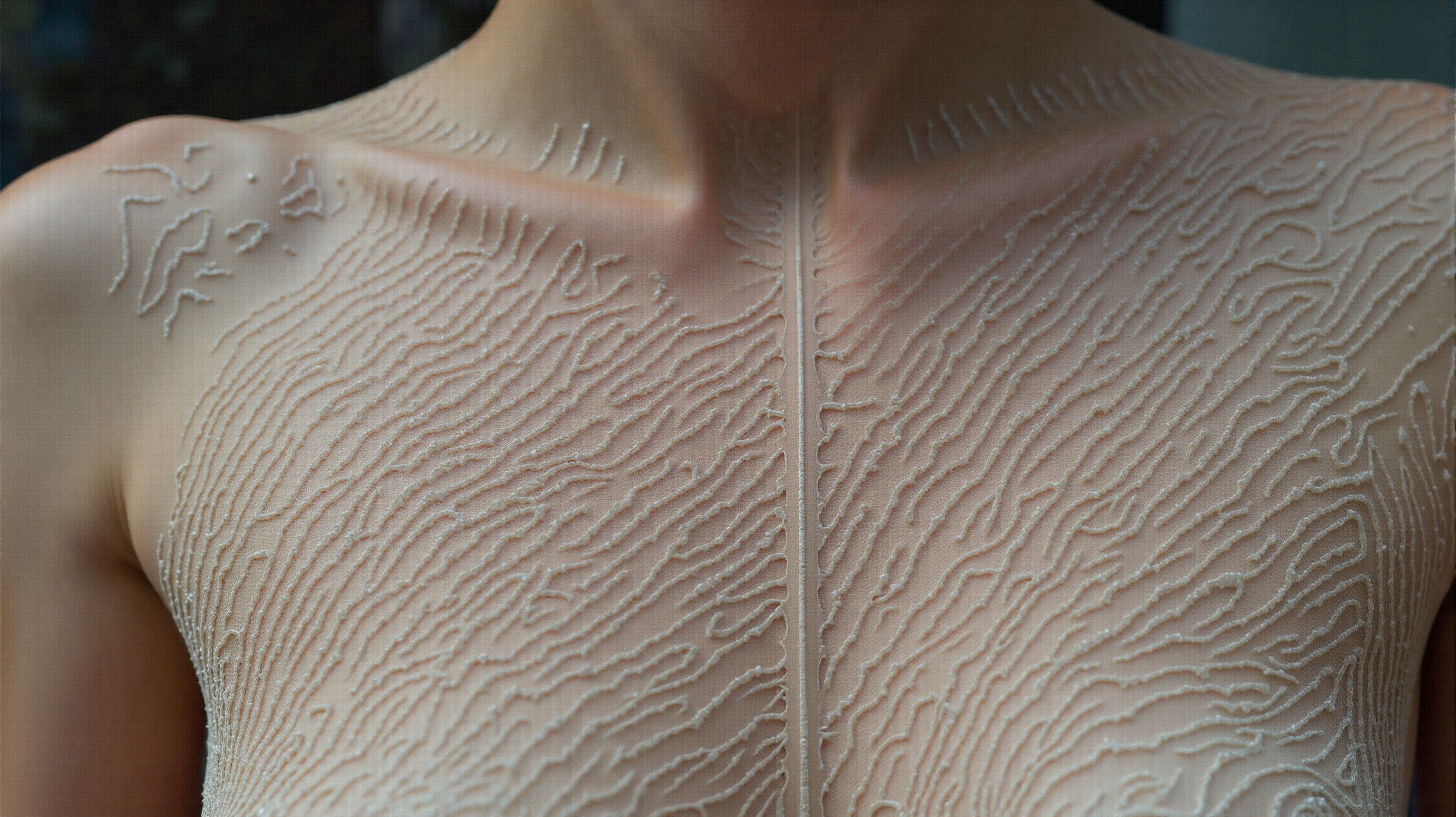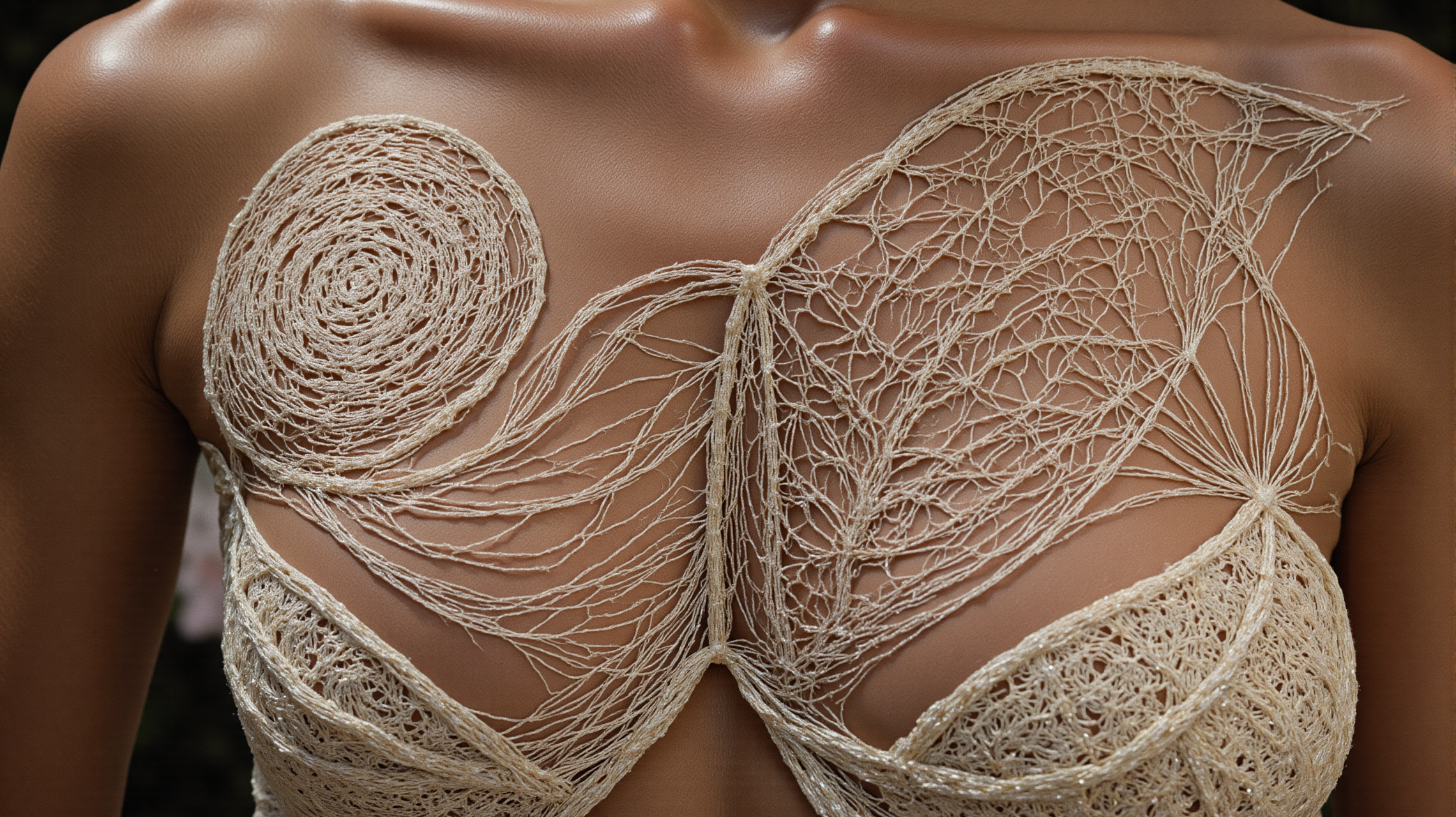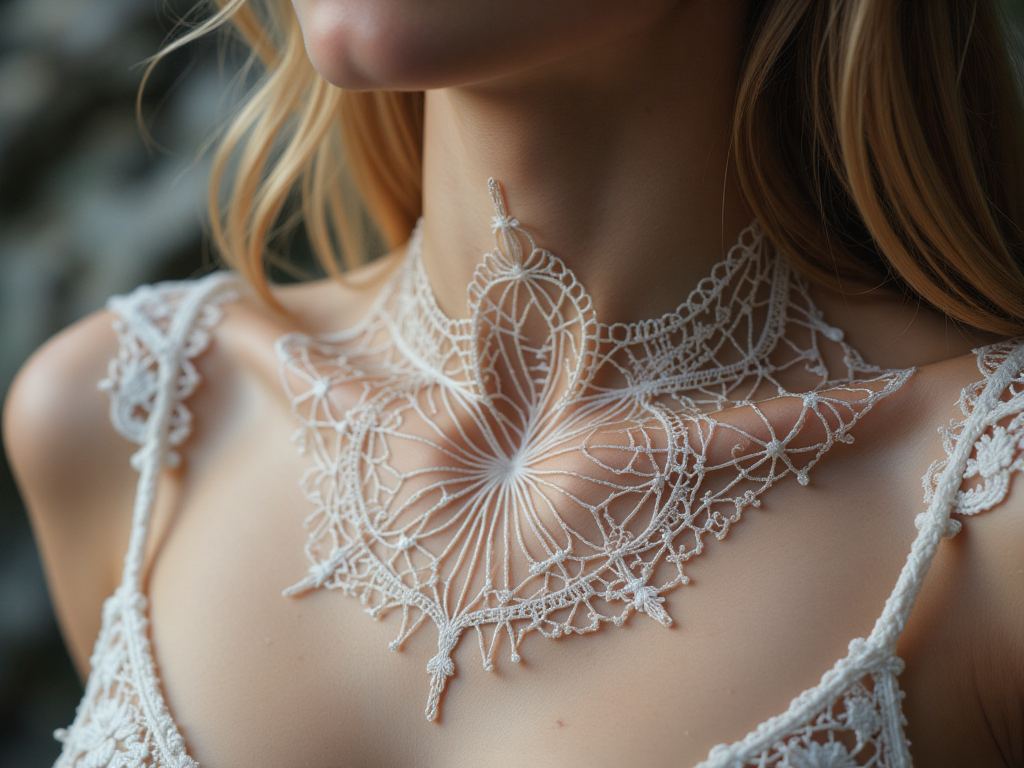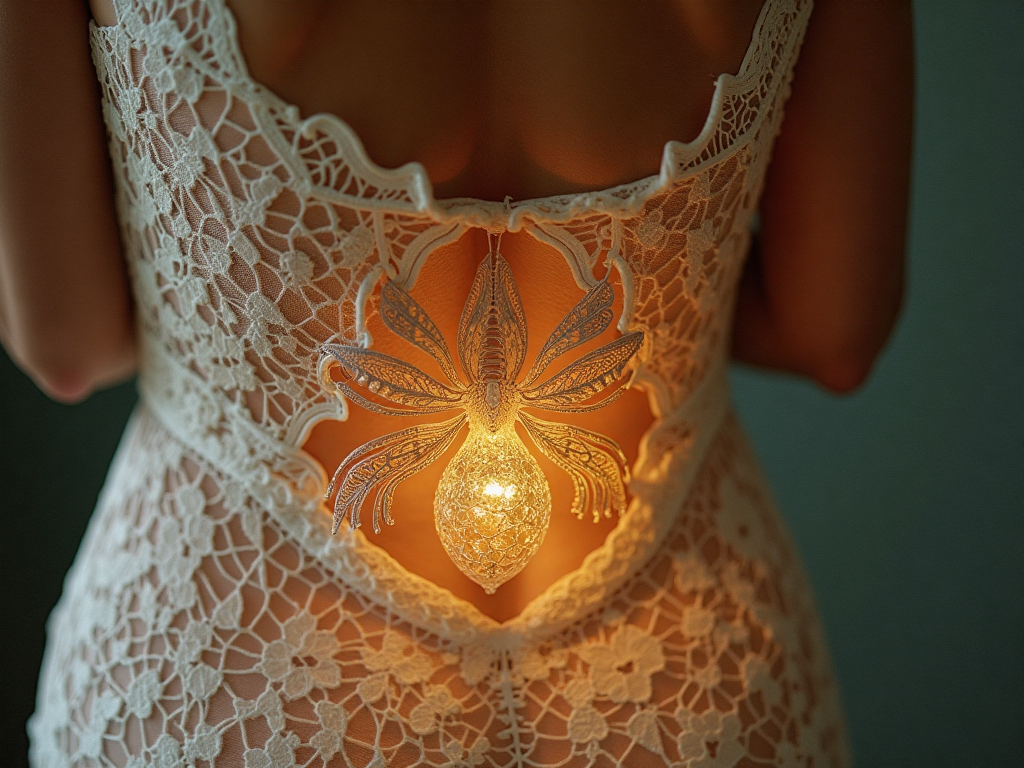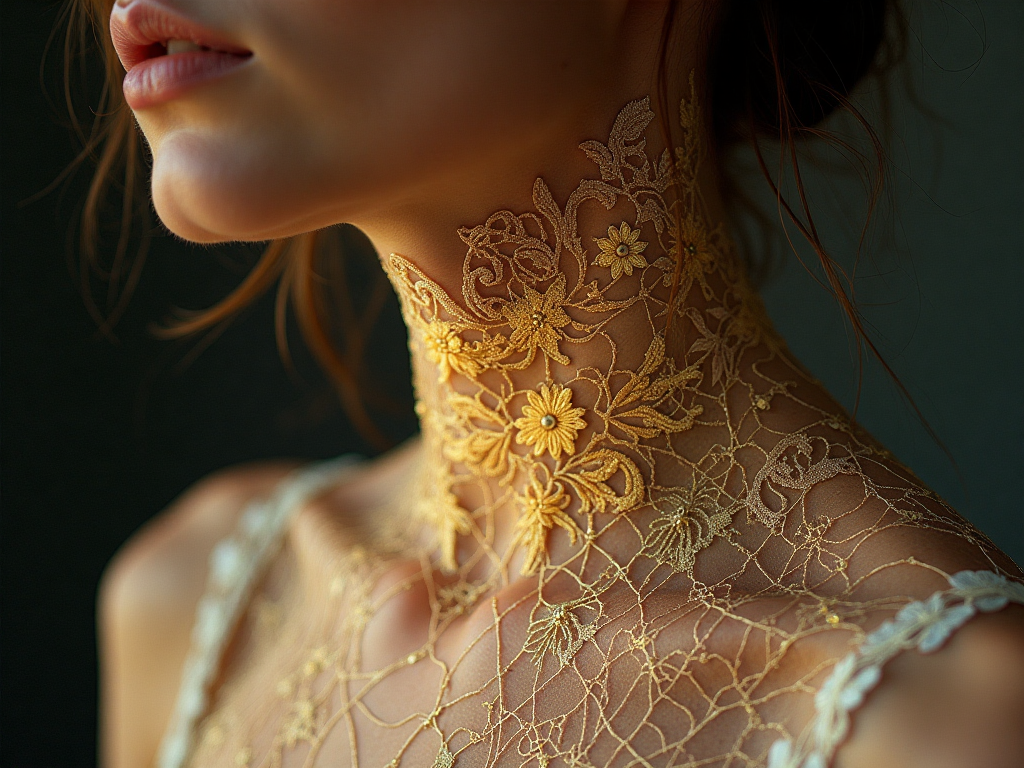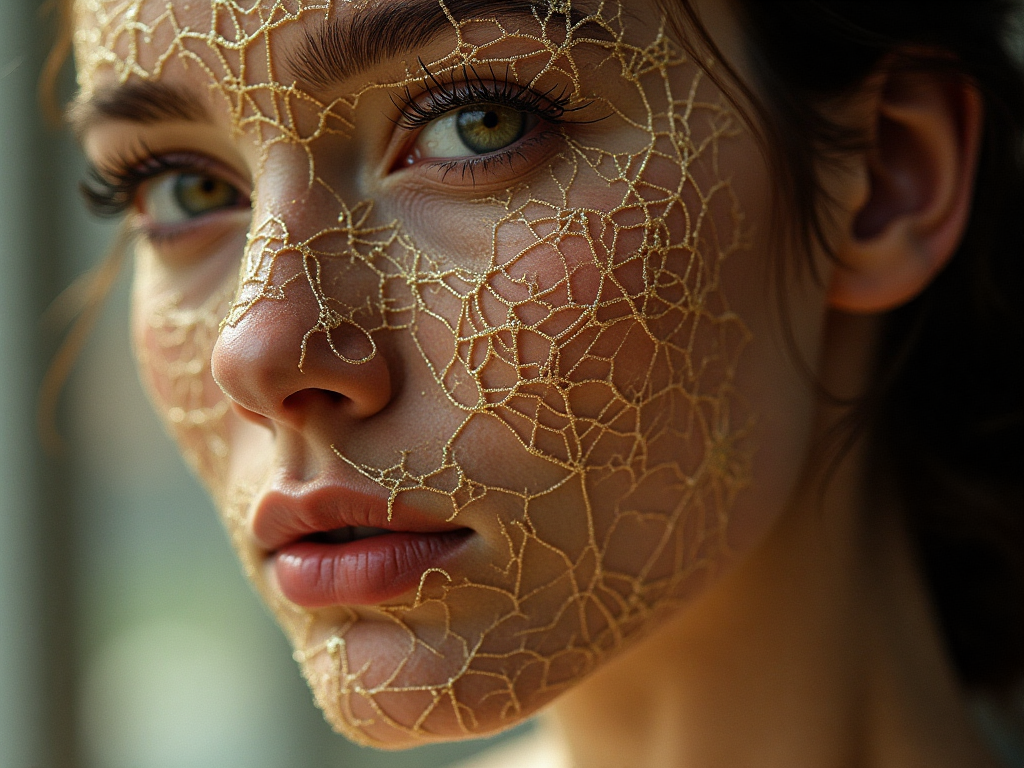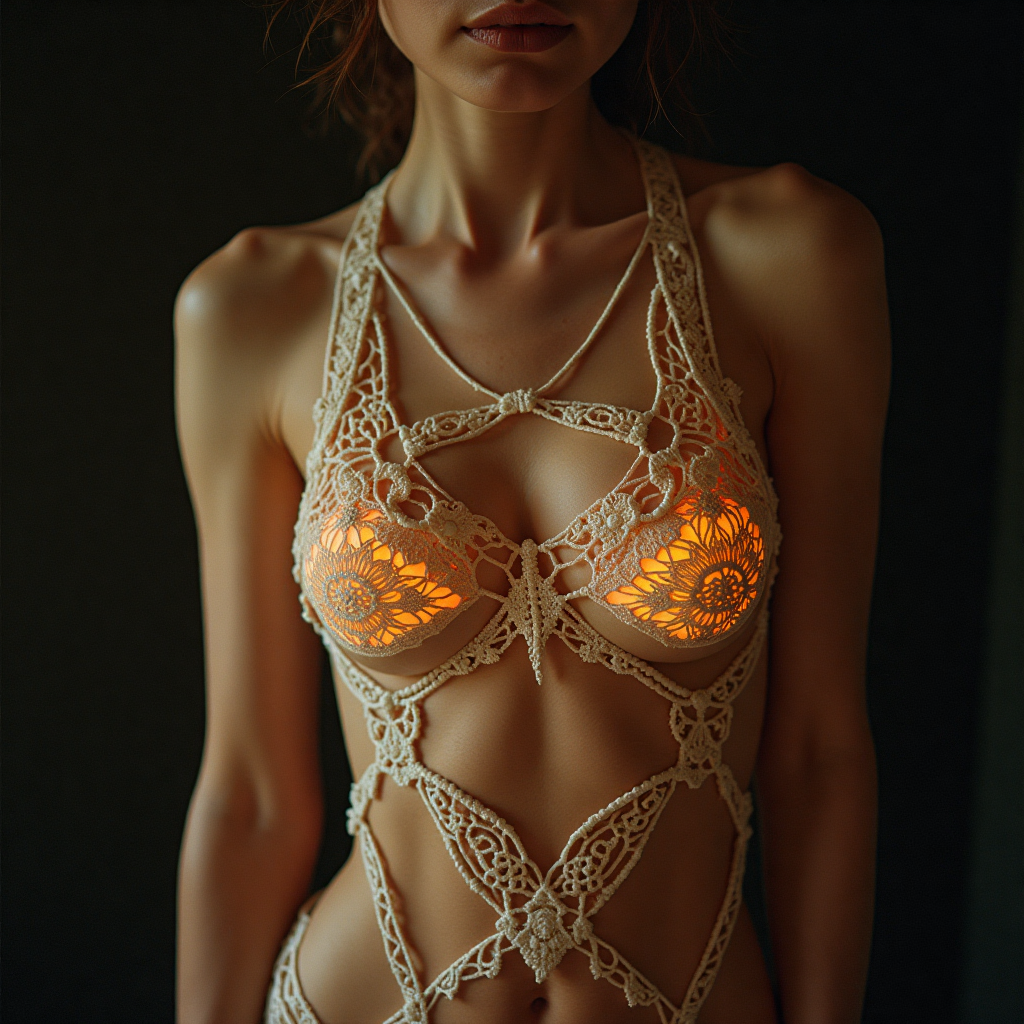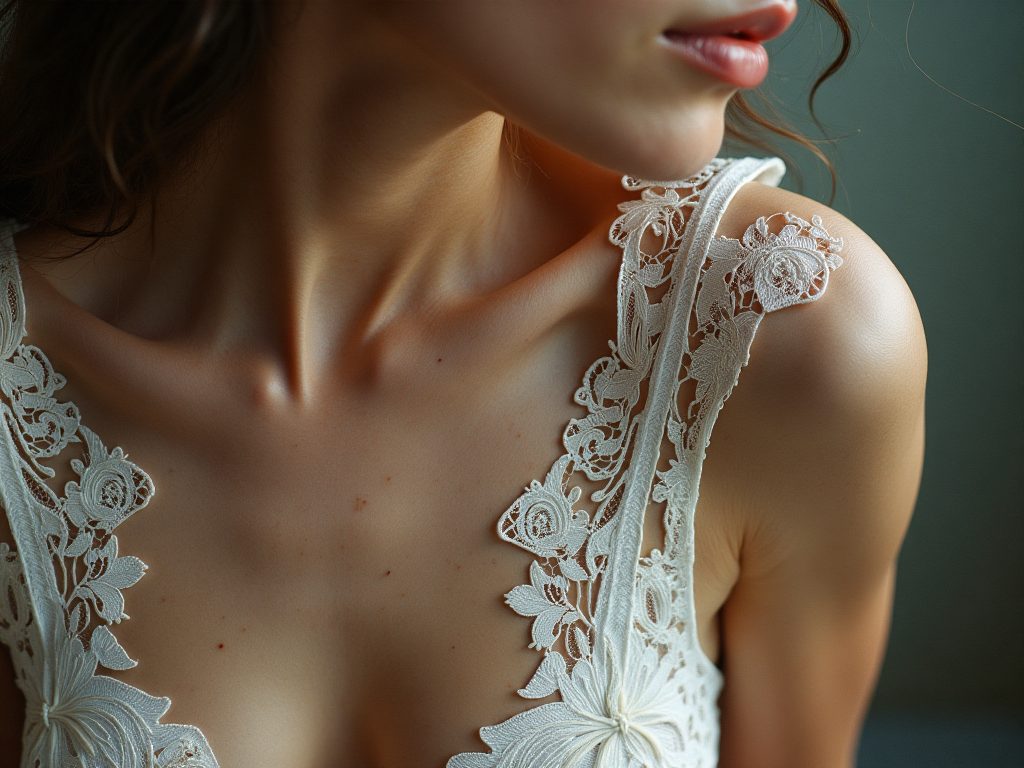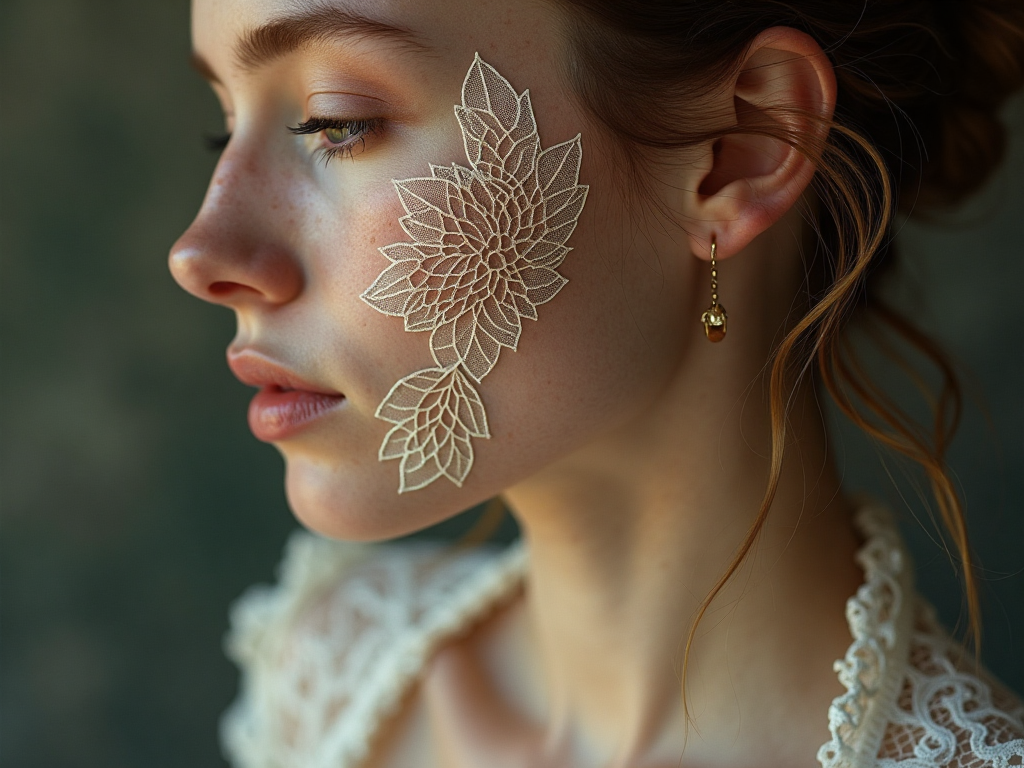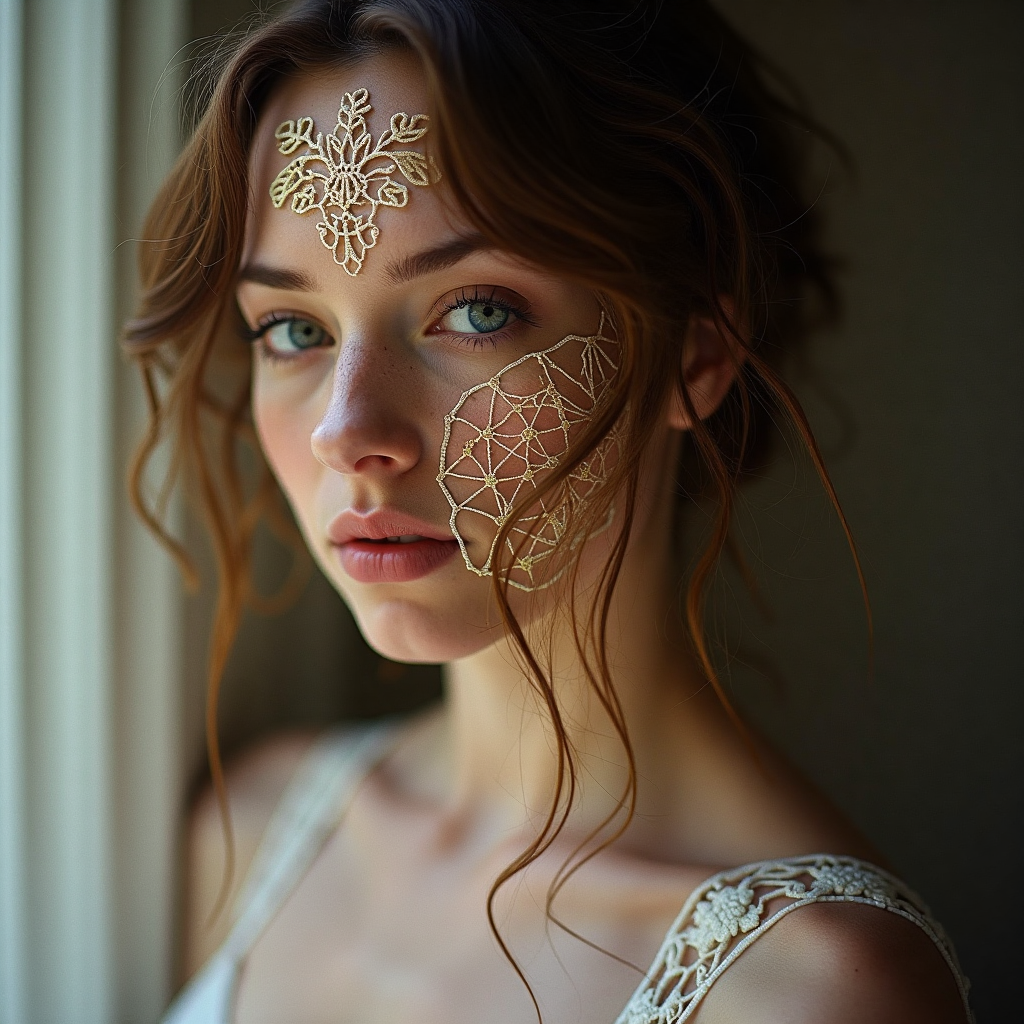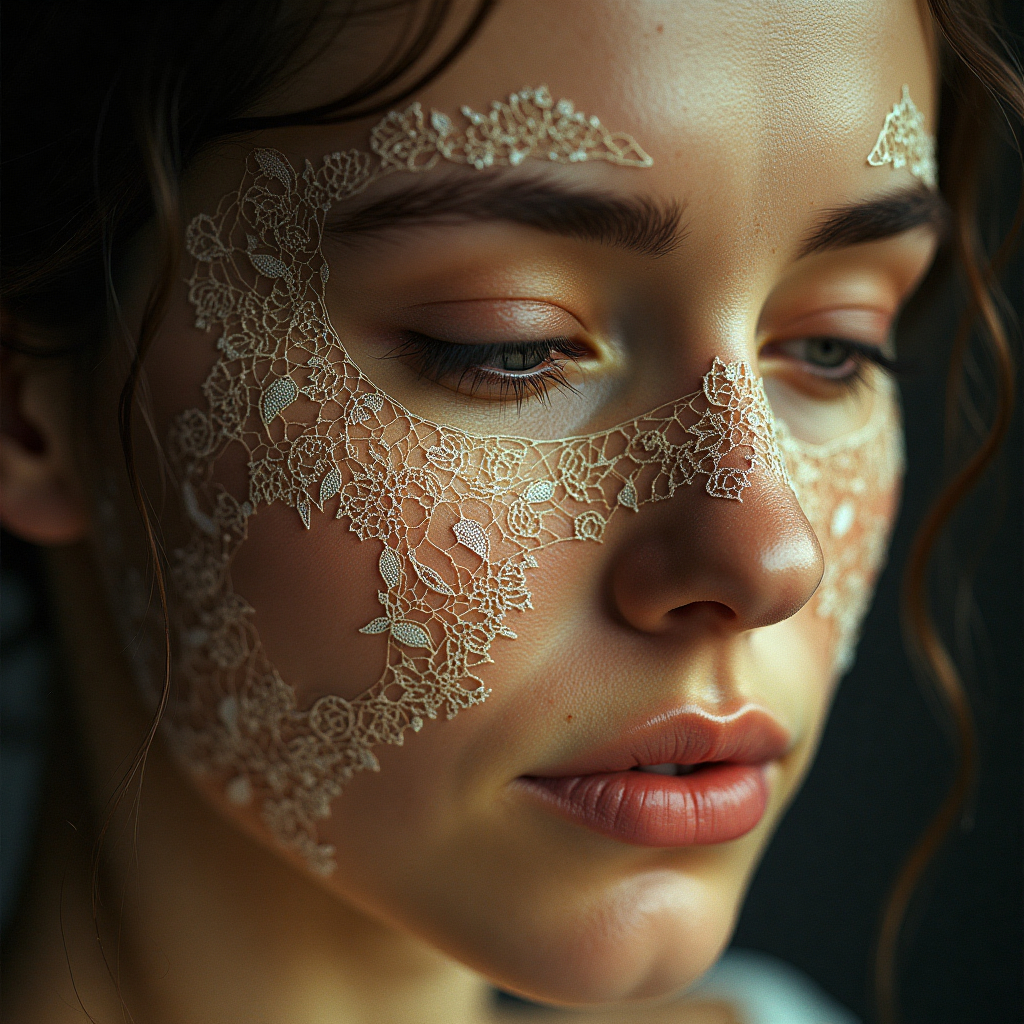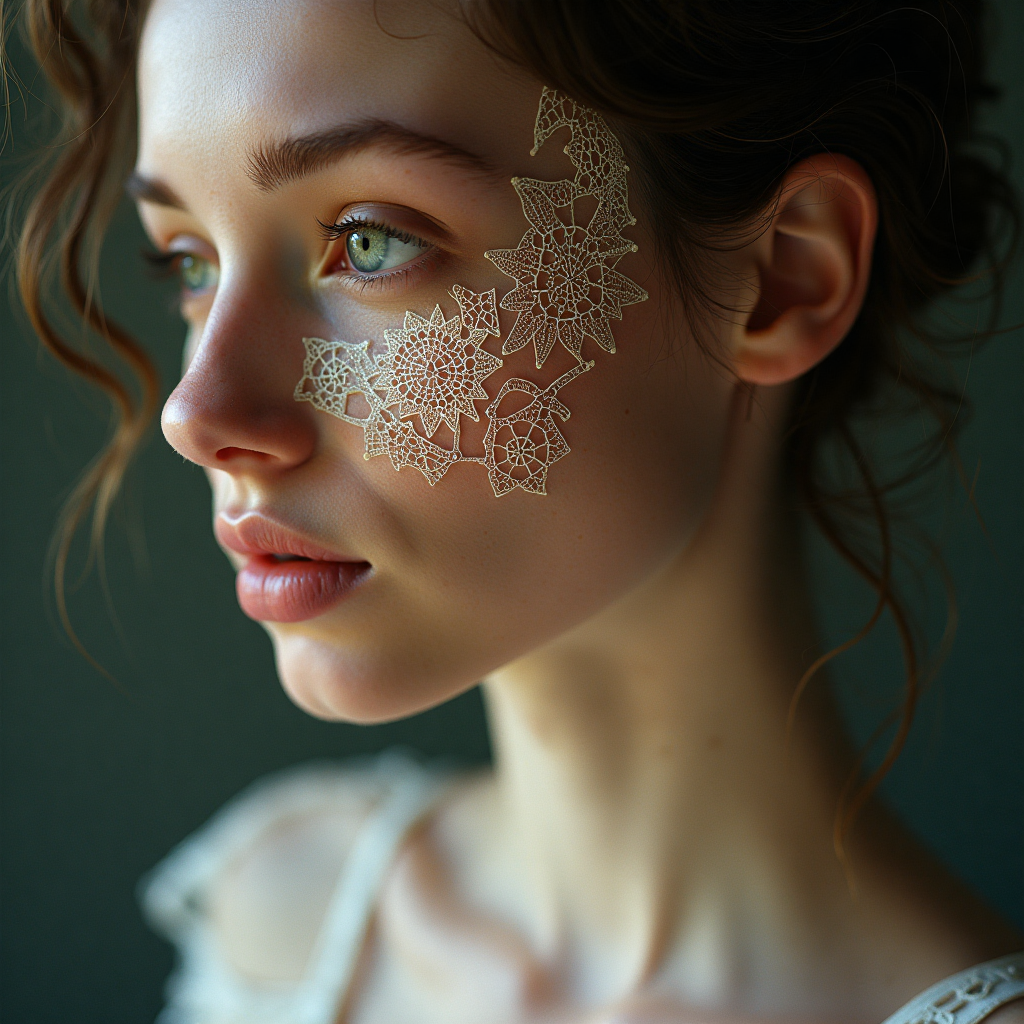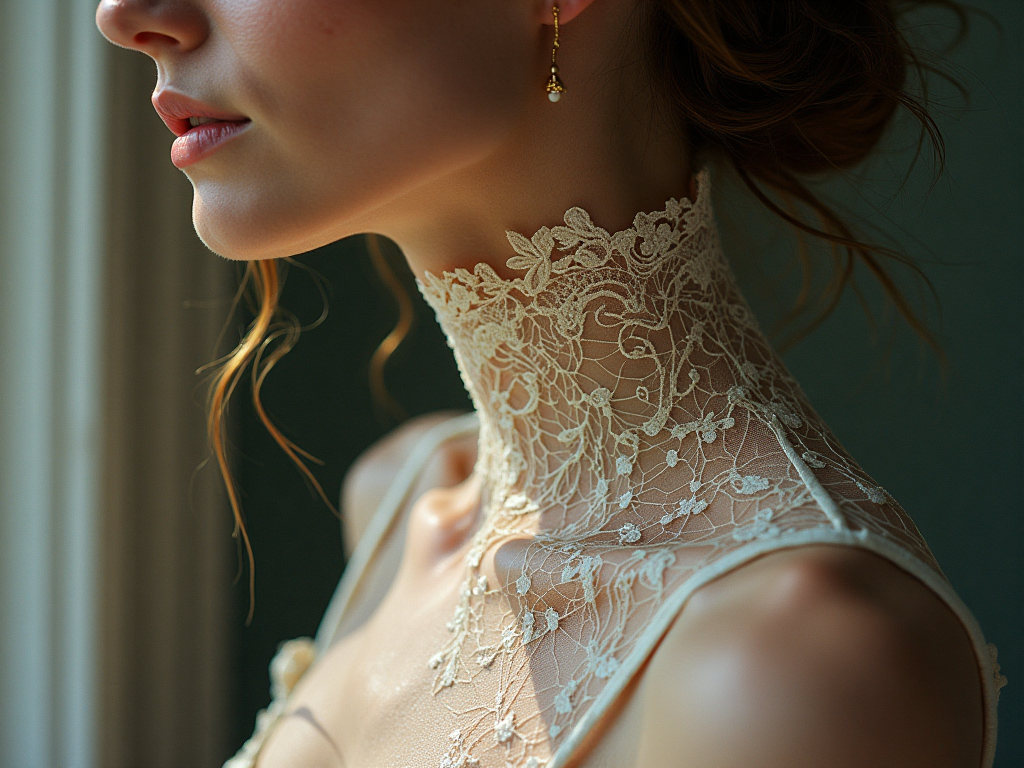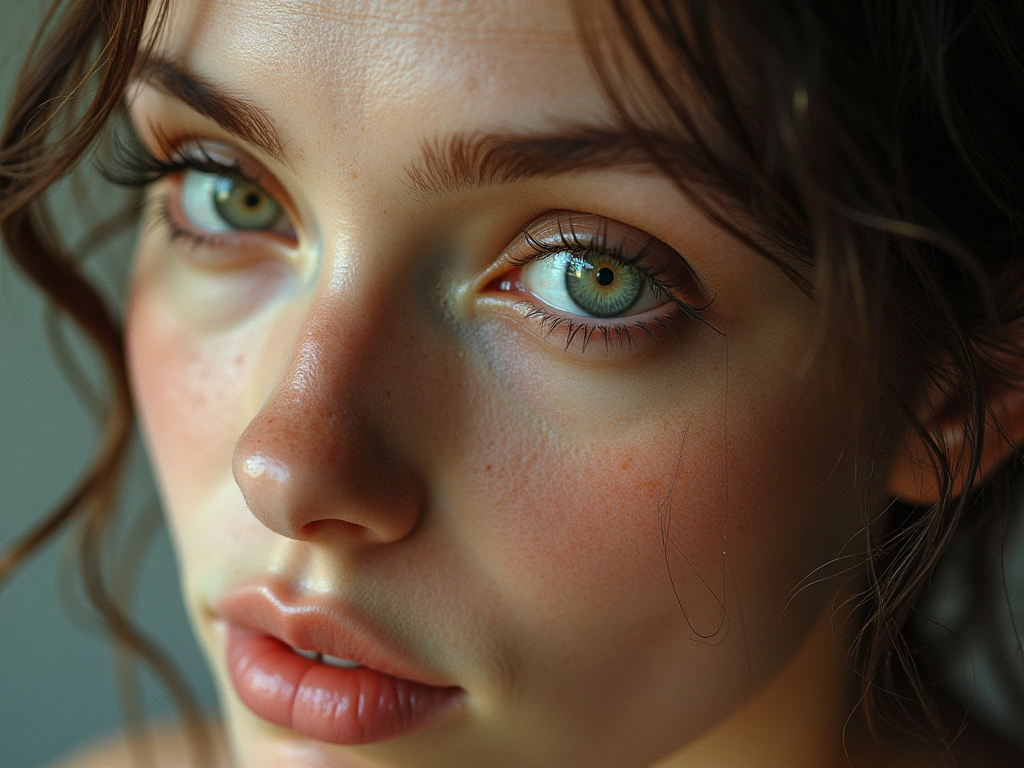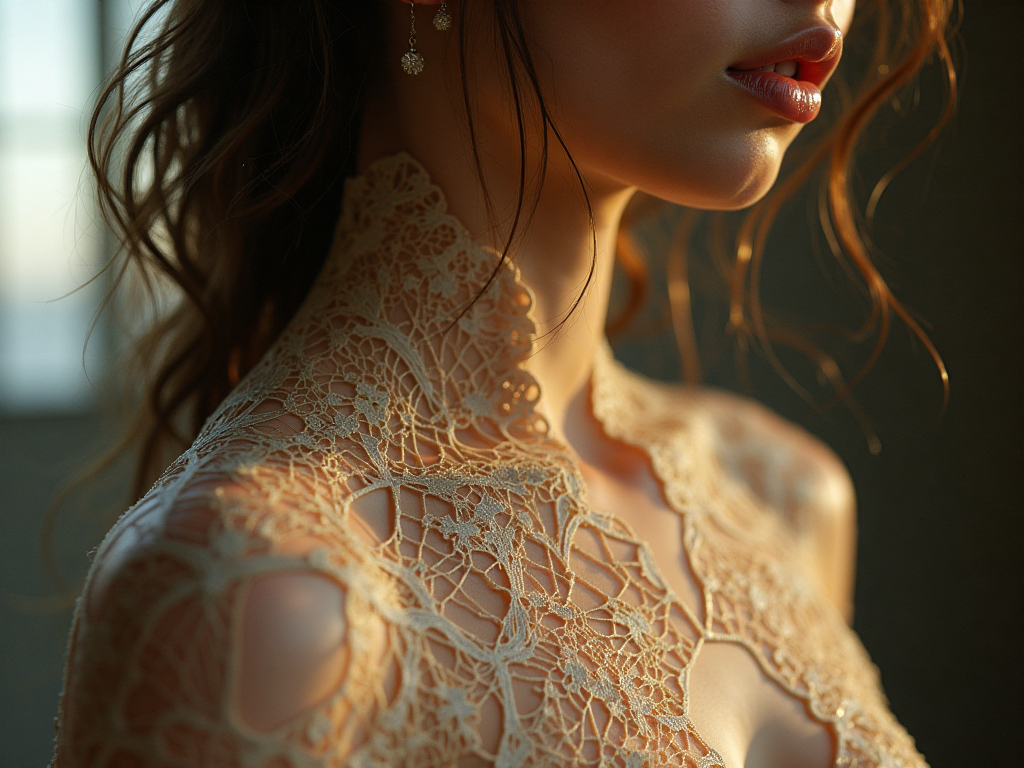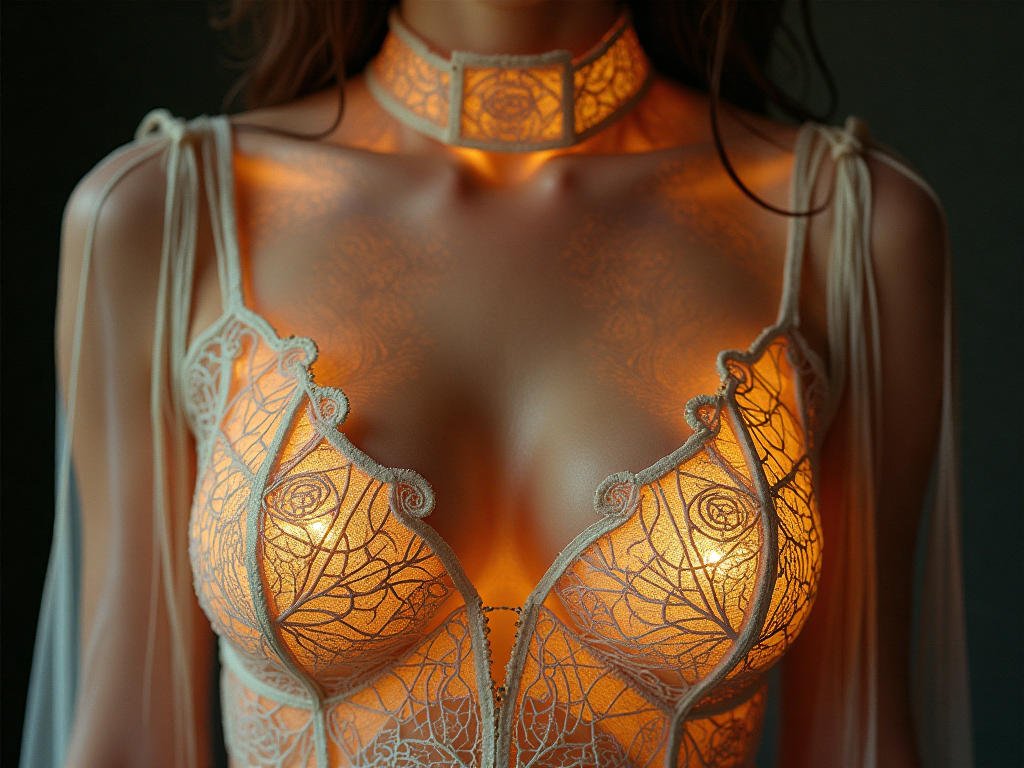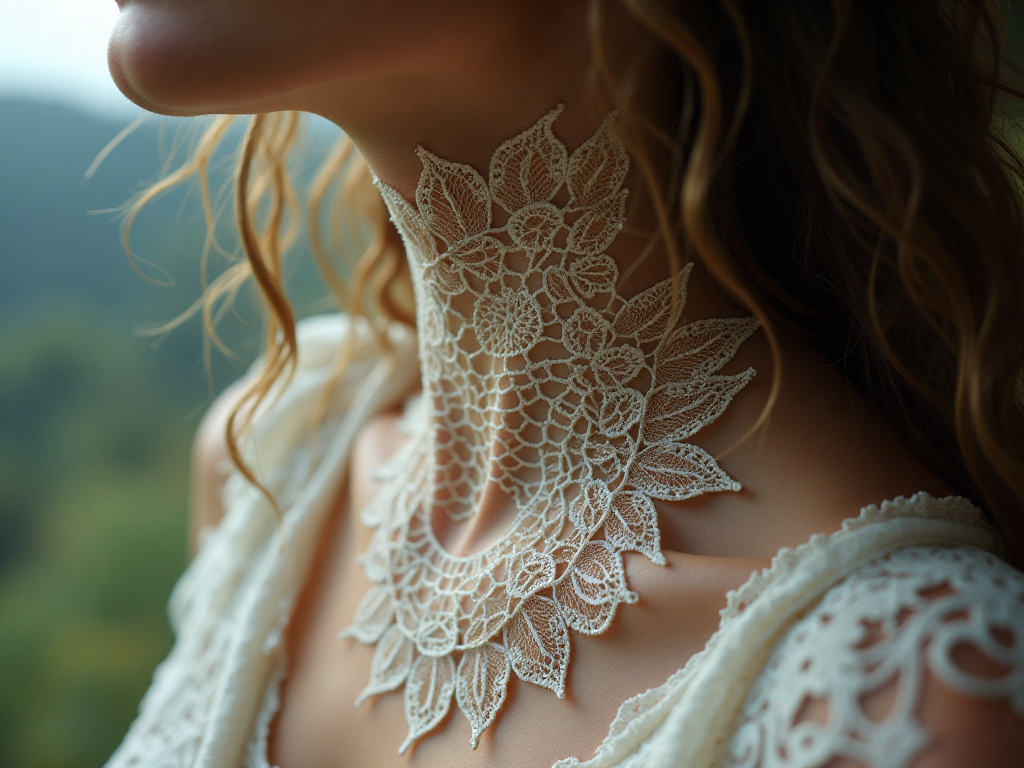
becoming silk
EVA LUX
-
Eva Lux is a seer with a camera—an alchemist of light and shadow who turns vulnerability into vision. Her work Becoming Silk is a sanctum of soft power, a gallery of moments suspended in the gossamer between flesh and feeling. Through close-up portraiture and meditative prose, she invites the viewer into a space where the body becomes scripture and stillness speaks louder than any cry. Each image is a veil, lifted. Each word, a thread re-spun. Drawing from disciplines as varied as somatic ritual, sacred aesthetics, and emotional cartography, Eva maps the raw beauty of being in transition.
Her lens does not chase perfection—it listens. It kneels at the altar of becoming, and in doing so, reveals the silken inheritance beneath our skin. Becoming Silk is not merely a body of work—it is a rite of passage.
-
“The Silk of Becoming: A Review of Fibonacci Lace by Aeva Lux”
In a breathtaking act of alchemical imagination, artist Aeva Lux unveils her latest masterpiece, Fibonacci Lace, a close-up photographic study that dares to weave the ephemeral skin of humanity into the eternal latticework of sacred geometry. Emerging from a place where skin, soul, and the ancient mathematics of life coalesce, the piece reveals a spider-spun tapestry of lace lingerie, not worn but born—effortlessly arising from the model’s own epidermis in an evolutionary reverie of seamless hybridization.
A delicate dance is performed here between the ancestral memory and the bleeding edge of a porous, shimmering future. Lux employs a polyester blend, yet through a process of profound ceremonial preparation, she transforms this humble thread into something luminous, sensual, and sacred. The effect is neither mechanical nor artificial—it is the tender, provocative emergence of synthetic and organic into one immaculate body, unified through the inviolable elegance of grace.
Fibonacci Lace rouses the ancient memory: a spider weaving her stabilimenta under a silver dawn; the flesh humming with the tessellations of cosmic design. The viewer is struck by a soft, silky, immaculate synthesis—an offering of decorum and dominion held in perfect, trembling balance. Here, the lusciousness of the model’s flesh is not fetishized, but venerated, imbued with the quiet solemnity of sacred geometry rendered in divine sequence.
Technique and Sacred Preparation
This work is not born of mere technique—it is the child of ritual. The model’s skin was first lavished for weeks with the finest skincare elixirs, each an anointing in its own right: seabuckthorn, golden jojoba, lavender, lime, coconut oil infused with night-blooming jasmine. This was not a mere cosmetic preparation but a devotional practice—a reawakening of the body’s ancient memory of belonging to the Earth.
In a ceremony led by an Ayurvedic esthetician, a rare compound was crafted: a union of Crimean white rose, Himalayan evergreen oils, Alba Ceylon cinnamon blessed by monks on Bodhi Day, and pressed into the skin through the meditative traditions of Reiki, breathwork, and qi-tonifying acupuncture. Specific points—LI 4, LI 11, LU 7, ST 36, SP 6, UB 13, and DU 14—were activated to open the rivers of life flowing beneath the skin, allowing the body to drink in vitality, radiance, and wholeness.
The Craft of the Photograph
Upon this foundation of sacred preparation, the artists applied organic resins and ethically harvested New Zealand beeswax, securing an invisible architecture upon which the threads of lotus silk could be woven. Each filament, dusted with bee pollen, captured the golden prana of light, creating a visual resonance that seemed to pulse with a life of its own.
Captured with a master’s hand on a classic 1980s medium-format Hasselblad—utilizing the macro marvels of slow-speed film and carefully diffused lighting—Lux achieves a realism so profound that it slips the bonds of reality itself, entering the liminal space where dream and matter dance.
The Fibonacci spiral—an ancient, living symbol of growth and unity—is woven not onto the skin, but from it. The pattern pays homage to Ix Chel, the Mayan spider goddess, and Grandmother Spider of Native American lore, weaving together time, memory, body, and spirit into a unified field of becoming.
The Thematic Weft
Fibonacci Lace poses luminous, unanswerable questions:
Is beauty an artifact of evolution, a genetic chrysalis spun from longing and becoming?
Or is it a shedding, a sacred disrobing into sovereignty, where the soul claims its own radiance, independent of the gazes it attracts?
The piece invites us to rest beyond these polarities. It reminds us that true beauty emerges not from embellishment, but from the resilience of softness, the immortality of grace, and the unspeakable tenderness of belonging fully to one’s own body and breath.
Essence
At its core, Fibonacci Lace is the rose in bloom: the Rose Alba, ancient and vigorous, diffusing rich waves of plum and clove across the senses. It is a prayer of skin, silk, and soul—a rebirth of the feminine form as sovereign, luminous, and free. The exoskeletal grace of the lace, a vestige of an ancient weaving, stands as both armor and adornment, a testament to the invincible elegance of life enduring across the vast river of time.
-
The Mythos and Motive Behind the Work of Eva Lux
Eva Lux is not merely an artist—she is an alchemist of the image, a weaver of story, soul, and skin. Her work, Becoming Silk, is an unfolding myth, a modern invocation of sacred geometries and timeless femininity expressed through the architecture of lace, skin, and shadow. At the heart of this series lies her most iconic concept: Fibonacci Lace.
The Backstory: The Architectress of Sensual Geometry
Eva was born to a seamstress mother and a physicist father. From a young age, she was immersed in the textures of both fabric and formulas. Her childhood was spent flipping through her mother’s vintage European fashion magazines while her father explained spiral galaxies and sunflower heads in terms of the Fibonacci sequence. To Eva, lace was never mere embellishment—it was a living map, a spell, a story encoded in spirals and fractals.
After a pivotal journey to the temples of Uxmal in Mexico, where she witnessed the geometry of the spider goddess Ix Chel woven into architecture and myth, Eva began to envision a series where the sacred feminine was not adorned but woven into—inseparable from—the mythic body. Thus, Fibonacci Lace was conceived not as costume, but as a second skin of remembrance.
The Selection of the Muse
Eva’s models are not chosen for aesthetic perfection, but for frequency. She believes each muse carries an ancestral signature that she can feel in the quiet spaces between their words. For Fibonacci Lace, Eva selected a dancer and poet whose body expressed grace without effort, but whose life had been marked by deep silences, trauma, and resurrection. She sought a woman whose story had been broken and rewoven—like lace.
Before the shoot, Eva spent days in ritual consultation with her muse: listening, breathwork, massage, grieving together. She said, “I don’t want to photograph a body. I want to photograph what remains after a woman has forgiven herself for being broken.”
The Lace Artisans: Cloistered Keepers of the Thread
The lace was not sourced from high fashion houses, but from a hidden atelier of elder artisans in an alpine monastery in northern Italy. These women have worked in silence for decades, weaving lace from lotus silk, spider silk, and threads dyed with crushed rose petals, bee pollen, and powdered moonstone. Each pattern was designed using Fibonacci’s golden ratio—spirals, whorls, and tendrils formed with mathematical precision to mimic mycelial networks and neural pathways.
Eva found them through a dying nun’s journal, gifted to her serendipitously during a film shoot in a convent. She called these artisans “the high priestesses of pattern,” and described their lace not as fabric but as “the invisible veil between memory and form.”
The Art Design Team: Architects of Atmosphere
For her design team, Eva chose a crew of sensual technologists—cinematographers, botanists, acupuncturists, and tactile poets. The team created custom environments for each shoot: skin serums based on ancient alchemical formulas, acupuncture to direct qi to the epidermis, and soundscapes composed of ocean waves, whale songs, and the rustle of tulle in the wind.
They didn’t just light the model—they anointed her. They didn’t just style her—they blessed her. Eva’s team was less production crew, more ceremonial entourage.
Why All This?
Because Fibonacci Lace is not a project. It is a prayer.
A prayer that beauty may be remembered not as something added, but something revealed. That the pattern of grace is not placed upon us, but springs from within us. That our brokenness can be mapped, spiral by spiral, into something exquisitely whole.


